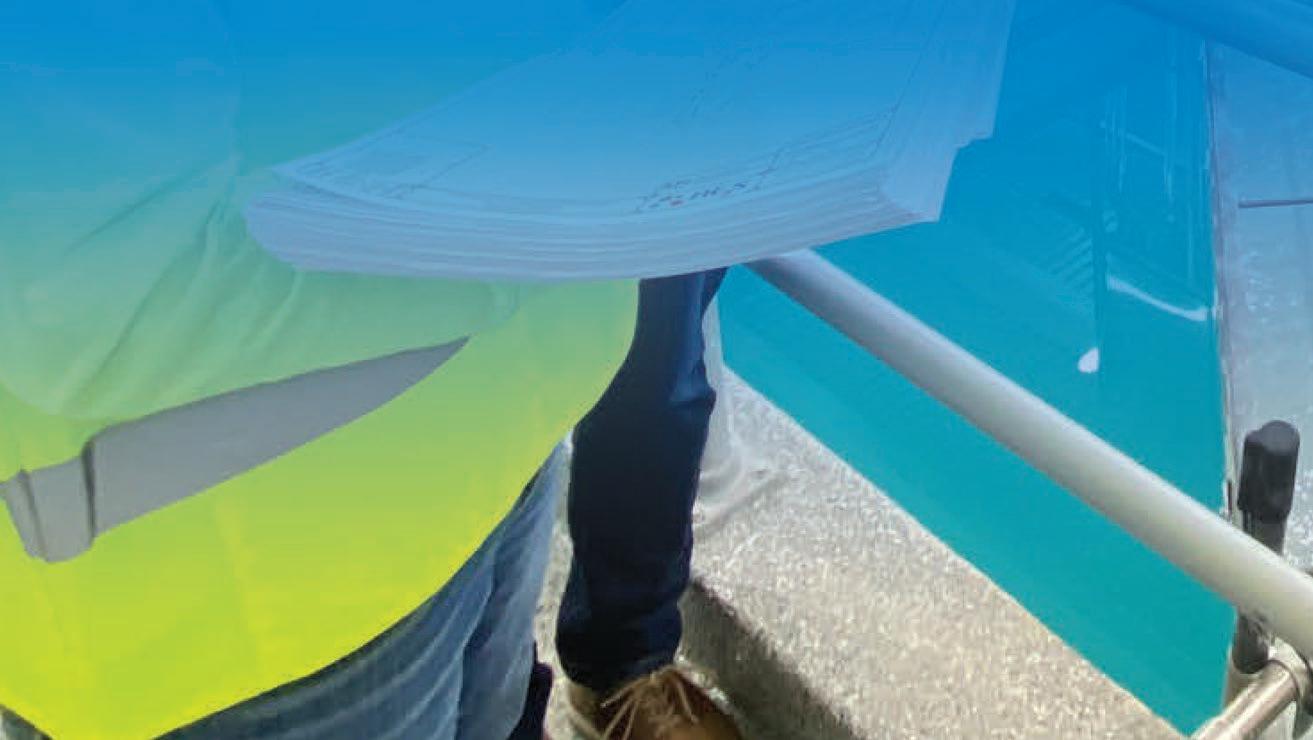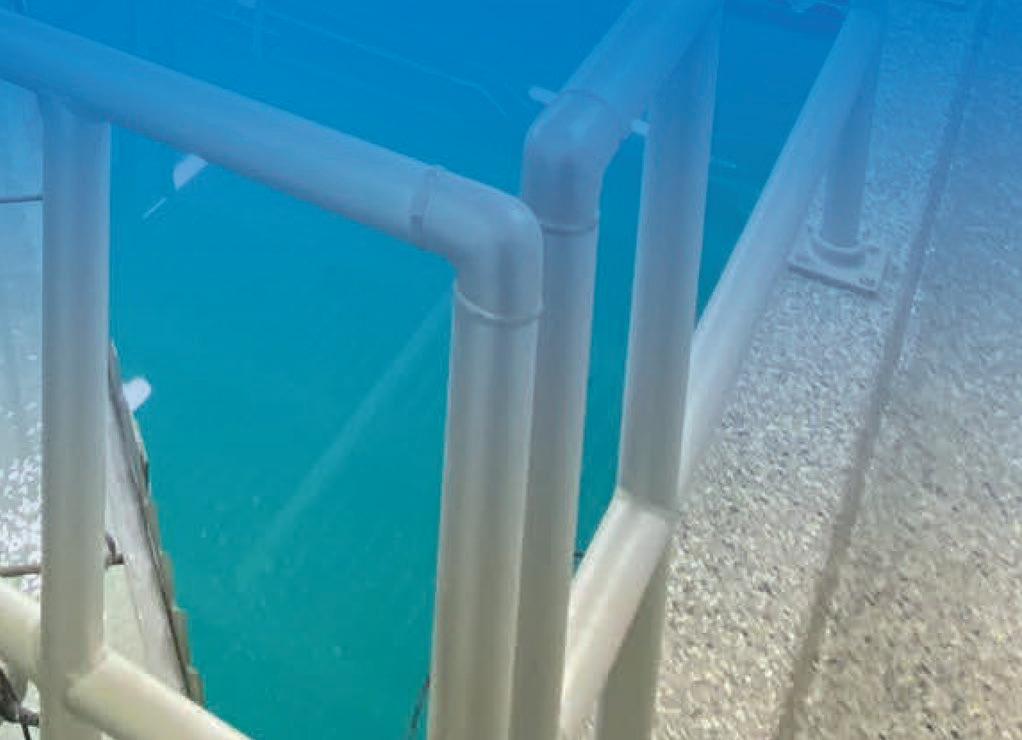


























































































































































































































































































































































































































































































































































































































































































































































































































































































Austin Chavez is passionate about securing and protecting public water supplies in Colorado for generations to come. And, with the backing of a nationwide firm with over 100 years of service, he’s well equipped to meet the toughest challenges facing utilities and communities.

Austin Chavez | Project Manager

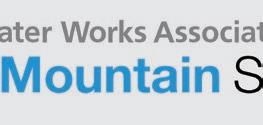

Rocky Mountain Water Magazine Group
The following volunteers support RMSAWWA and RMWEA with content collection, management, editing, and reviewing the magazine.
BLAIR CORNING bcorning@englewoodco.gov
HANNAH FODOR hfodor@carollo.com
RORY FRANKLIN rfrankli@auroragov.org
KARI LARESE klarese@highlsandsranch.org
RMSAWWA Communications Committee
KARI LARESE, Co-Chair klarese@highlandsranch.org
RORY FRANKLIN, Co-Chair rfrankli@auroragov.org
ERIN RIDOLFO, eNewsletter Editor eridolfo@rmsawwa.org
RMWEA Communications Committee
ELIZABETH DEWAARD, Chair edewaard@englewoodco.gov
JORI NELSON, eNewsletter Editor jnelson@waterrf.org
NATALIE COOK, eNewsletter Reviewer ncook@auroragov.org
ANDREW DUGAN, eNewsletter Reviewer andrew@andrewwritescopy.com Published by
Tel: 866-985-9780 Fax: 866-985-9799 info@kelman.ca www.kelman.ca
Managing Editor: Mathias Leiendecker
Marketing Manager: Chad Morrison
Design/Layout: Jackie Magat
Advertising Coordinator: Sabrina Simmonds



FROM THE RMWEA PRESIDENT
Bill Peretti, RMWEA President
Ihope this letter finds you all in good health and energized for the months ahead. The current Rocky Mountain Water Magazine issue is themed; One Water, a concept that highlights the interconnectedness of our water systems. There is no better way to embody this theme than by attending the Rocky Mountain Water Conference, a collaborative event between the Rocky Mountain Water Environment Association (RMWEA) and the Rocky Mountain Section of the American Water Works Association (RMSAWWA). This conference will take place at the end of August in the picturesque setting of Keystone, Colorado.
The Rocky Mountain Water Conference is a cornerstone event that perfectly aligns with our mission of fostering an environment of learning, networking, and enjoyment while providing value to our members. This year’s conference promises to be an exceptional gathering with more than 100 exhibits in the exhibit hall and more than 200 technical presentations. It’s an unparalleled opportunity for professional development and to stay abreast of the latest advancements in our industry. I urge you all to take advantage of this unique event to enhance your knowledge and build meaningful connections.
I would like to extend my sincere gratitude to our conference chairs, Stephanie Elliott and Joe R. Tamburini, for their tremendous efforts in organizing this year’s conference. Their dedication and hard work have been instrumental in putting together a diverse and comprehensive
Supporting the Rocky Mountain Water Conference is a direct way to engage with the RMWEA mission. By participating, you contribute to an environment that promotes continuous learning, robust networking, and enjoyable experiences that add value to our professional lives. Let’s come together in Keystone to celebrate the spirit of One Water and work towards a sustainable future for our water resources.


program that caters to all aspects of water management. The conference will not only provide technical insights but also foster a collaborative spirit, essential for advancing our shared goals.
Supporting the Rocky Mountain Water Conference is a direct way to engage with the RMWEA mission. By participating, you contribute to an environment that promotes continuous learning, robust networking, and enjoyable experiences that add value to our professional lives. Let’s come together in Keystone to celebrate the spirit of One Water and work toward a sustainable future for our water resources. I look forward to seeing you all there and sharing in the collective wisdom and camaraderie that define our association.

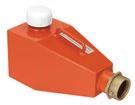







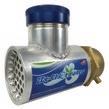



Charlie Leder, PE, RMSAWWA Chair, Senior Associate at Hazen and Sawyer
All water has value. This is the underlying mantra as we water professionals advance toward a One Water philosophy in managing the world’s most important resource. For those living in the Rocky Mountain region and who rely on water drawn from the Rio Grande, Colorado, or Platte River basins and their tributaries, it certainly rings true. If you are one of the lucky ones living in a water-rich region of North America, maybe not so much. At the 2023 AWWA ACE conference held in Toronto, I was astounded to listen to the challenges faced by a wastewater treatment plant manager in the York Region of Ontario, Canada who was trying to find takers for a reasonably good quality reclaimed effluent. Offers to potential end users, both industrial and agricultural, were met with, “We already have a reliable water supply; why would we want to switch?” Well, at least that producer of reclaimed effluent found a wetland into which they could discharge that could provide some nutrient uptake.
For non-traditional water supplies that have been previously undervalued, planning for its re-use should begin by answering the following question, “Does the proposed plan for water reuse represent the best use of that water?” All water has value, but some water and wastewater uses are considered “more valuable” than others. Yes, everyone likes a lush green lawn or park, except for those who have to cut the grass, but does that make sense in an arid region? Are the crops being grown with reclaimed effluent helping to support the local economy? Maybe so, but as a long-time colleague of mine has often asked, “Why are we growing alfalfa hay in the desert?” Maybe to support a local dairy industry? Is reclaimed water for industrial cooling at a data center a better use of the water? Perhaps we should ask what types of number-crunching activities are taking place in that data center, like data mining for Bitcoin fortunes. Maybe I’m being a little judgmental here.
The City of Aurora, Colorado has aimed at non-functional turf and passed ordinances that will limit turf areas after recognizing the need to rein in what that community considers to be an unsustainable practice. The May-June 2023 issue of Rocky Mountain Water describes specifics on ordinances Aurora has developed for future developments. As for the turf areas that remain in that community, don’t be surprised to start seeing “Don’t Tread On Me” signs. Other communities in the Colorado River Basin are similarly

aiming for ways to promote water conservation by reducing non-functional turf areas. So maybe turf irrigation on a new golf course isn’t the best way to reuse a non-traditional water source. One controversial, non-traditional source of water is produced water from oil and gas production operations. Believe it or not, in and around Bakersfield, California where about one-third of all fresh vegetables in the U.S. are grown, the Cawelo Water District has a 50-year history of collecting and treating this non-traditional water source that is then blended 1:1 with fresh water and used to irrigate approximately 34,000 acres of orchards, vineyards, and other crops. Keep in mind, though, that this source of produced water is a lot



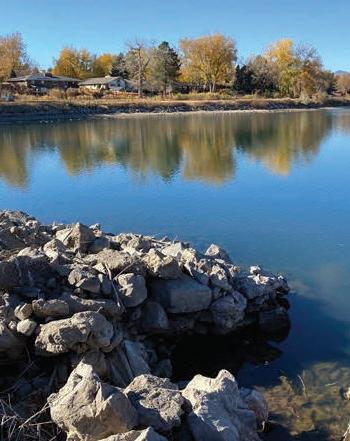


Water conservation helps save water for a “hot sunny day.” It also helps save on the resources otherwise needed to collect, treat, and distribute the water to customers.
less salty than produced water from the Permian Basin and less challenging to treat.
A more basic question in assessing the value of non-traditional water and a scheme to reuse it is, “Does it make sense to make the water fit for reuse?” I would start by first checking its total dissolved solids content early in the planning effort. Knowing that value will help steer decisions on choosing between two distinct overall approaches for reuse, namely “showers to flowers” i.e., a decentralized approach versus centralized systems that include “toilet to tap.” With “showers to flowers,” we have small-scale and maybe even microscale opportunities for local reuse next to where the effluent is being generated. This could be a great way to downsize CapEx and OpEx costs for reuse distribution systems provided that the effluent isn’t too salty for local reuse. In contrast, the centralized approach with a few exceptions will usually involve retrofitting a purple pipe distribution system through developed corridors and associated costs. Even so, the wastewater being reclaimed might not be as salty as that which would be recovered
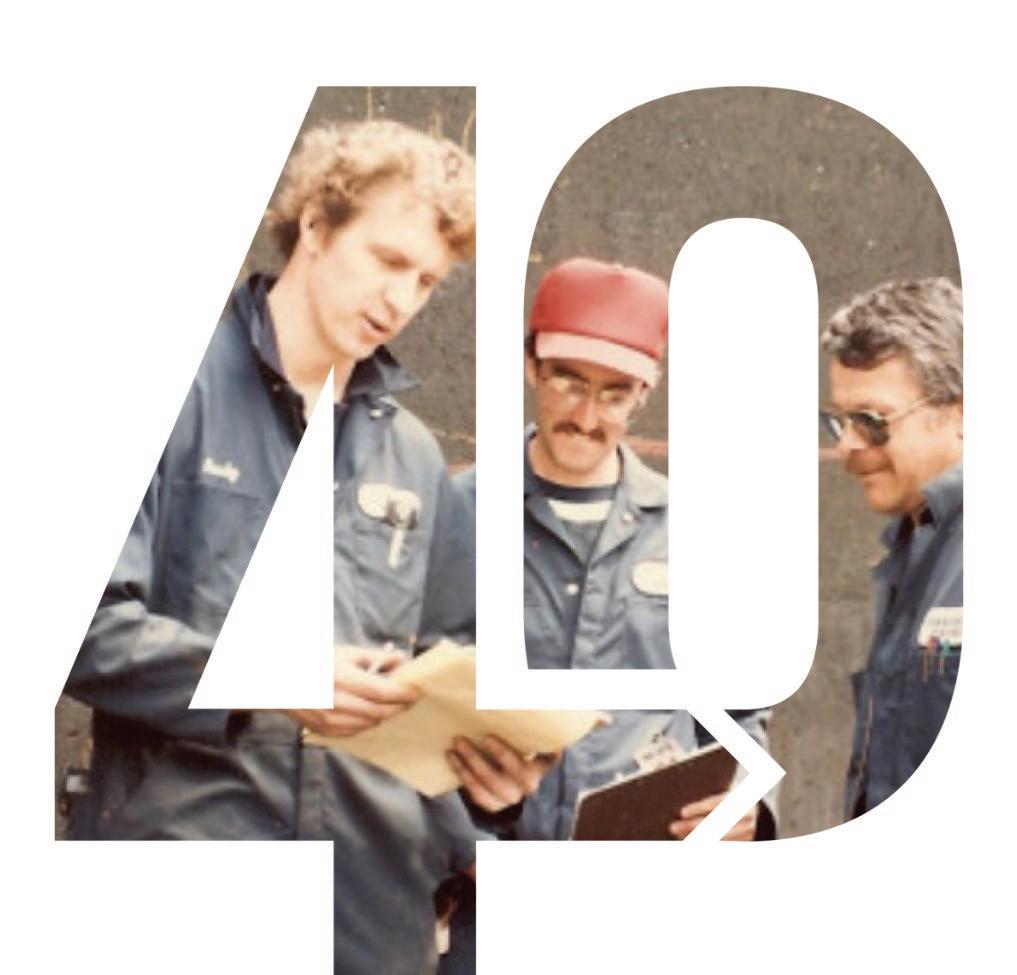

in a decentralized “showers to flowers” scheme. Who said that dilution wasn’t a possible solution to pollution?
Another key question in reuse planning is assessing whether the potential end use for the non-traditional water will be there for the long haul or at least until the planner/designer retires from practice. Colorado Spring Utility’s J.D. Phillips Water Reclamation Facility had a great plan in place for reusing its effluent for industrial cooling at the nearby Martin Drake Power Plant until that plant was decommissioned. Like Jerry Seinfeld in Season 4, Episode 21, one could say the decision-makers at Colorado Springs Utilities literally “hated the Drake.”
Water conservation helps save water for a “hot sunny day.” It also helps save on the resources otherwise needed to collect, treat, and distribute the water to customers. A major, new water conservation initiative will soon be underway, led by a consortium of Colorado water utilities, the City of Greeley, and RMSAWWA who will be administering a $319,000 grant awarded by the Colorado Water Conservation Board to define best conservation practices specifically for Commercial, Industrial, and Institutional (CII) water users throughout Colorado. Watch for developments from this initiative that will develop and share a fresh body of knowledge specific to CII conservation practices. For those water utilities in the Rocky Mountain region that missed the initial call to contribute, maybe there’s still a way to join this program.
Ready or not, the EPA has issued its PFAS rule for drinking water that eliminates some of the uncertainty for water treatment plant designers. Now the fun begins for water utilities to secure sufficient quantities of the right ion exchange resin or granular activated carbon materials to remove these forever chemicals from water. At a March 5 workshop jointly hosted by the RMSAWWA Water Treatment Committee and Rocky Mountain-based members of the Partnership for Safe Water, a novel concept of implementing a regional regeneration facility for activated carbon used for PFAS treatment was discussed.
Many thanks to Kevin Linder at Aurora Water and Chance Lauderdale at HDR for thinking outside the box on an approach that could help lessen the burden of residual management following PFAS treatment.
By the time this July-August issue of Rocky Mountain Water is distributed, many of our members will have taken advantage of early bird registration rates for the upcoming 2024 Rocky Mountain Water Conference set for August 25-28. A big thanks to all of our volunteer members who helped plan this event and its technical program at which we will continue to refine the concept of One Water. I hope to see you in Keystone!







rofessional communicators love nothing more than doing exactly that – communicating! Yet it can get better –communicating with others in your same industry. That’s exactly what’s taking place on Tuesday, Oct. 29 at the 2024 Communications Seminar. Communications professionals in the water and wastewater industry are getting together for their second annual seminar to collaborate, learn and network from one another. The RMWEA Communications Committee hosted the first seminar last fall in Golden, Colorado and it was a roaring success. Participants representing 20 different entities including utilities, consultants, non-profits and governmental agencies came together to learn from one another, share best practices, and get inspired. Attendees heard from a variety of speakers throughout the day and were given Q&A time between each session. More than new ideas were gained, new friendships and connections were made.

So, mark your calendar and be sure to join your fellow communications professionals at the South Platte Renew facility in Englewood, Colorado. Keep an eye on the RMWEA social media channels for registration information. We will see you there!









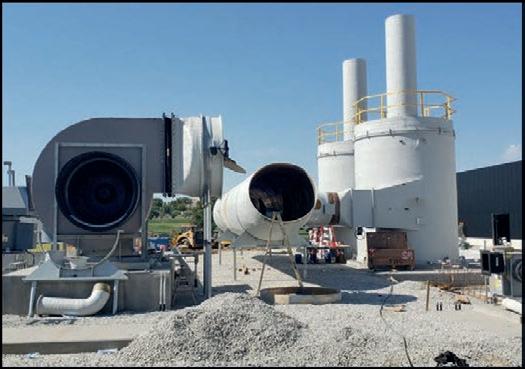




By Dennis Margheim, Key Accounts Coordinator, Greeley Water and Sewer
Over the past two decades, the concept of key accounts has undergone a significant evolution. Salespeople and customer service representatives sought to improve methods to interact with, attract, and retain customers, leading to the recognition of its value across industries. In particular, the power industry has embraced key accounts programs, going as far as developing industry-specific certification programs. Recently, water providers have also begun to realize the benefits.
“While many utilities recognize the importance of their largest customers, not all organizations build relationships with those key customers in a strategic way. This is where a key accounts manager comes in,” explained Key Accounts Manager, Dan C. Clark, with Xcel Energy. “There are several areas where building strong relationships with large customers can benefit your utility. Dig your well before you’re thirsty is an old saying that applies to many areas of life and to the importance of having a key account program at your utility.”
For the City of Greeley’s Water and Sewer Department, a key account coordinator came to fruition in early 2023. Deputy Director of Utility Finance and Customer Service, Erik Dial noted, “I proposed starting a key accounts program here at Greeley Water because I recognized we had a gap in our customer service and communication efforts for those customers who needed a little more attention due to the way they used our water and sewer services.” He added, “Our key accounts program has bridged that gap and has proven to be a fantastic resource for enhancing the communication between the utility and our key customers.”
In a nutshell, a key account represents your most substantial water users, largest wastewater producers, and notable customers. This group may include food manufacturers, industrial production facilities, government facilities, hospitals, and educational districts. They are not limited to singular large sites. Key accounts can also be owners of several smaller facilities spread throughout the footprint of your district or municipality. For each utility, the definition can vary.
Key accounts coordinators and/or managers serve as the dedicated one-stop shop for those designated customers. They take proactive measures, communicating planned service outages, upcoming rate changes, and strategies to reduce their utility bills. With a single phone call to a designated person or phone number, key accounts customers can receive comprehensive assistance, bypassing convoluted phone trees and endless transfers to other departments. Building strong relationships and rapport with your key customers is a
vital role of the key accounts team. Key accounts programs are part of an effective customer service suite that demonstrates communication, engagement, and efforts to build and support credibility with customers for the long term.
Naturally, the first steps involve budgeting for a new position(s) and recruiting suitable candidate(s) for the job. A strong background in customer service, especially within the utilities sector, proves vital. While a degree in related fields offers advantages, it isn’t a strict requirement if the right candidate is found. An ideal candidate will be self-reliant, resourceful, outgoing, organized, and have exceptional communication skills. The size of the team depends on how many customers you designate as key accounts. A good starting point for one person is 30-40 active, engaged accounts.
The next step revolves around determining which accounts to designate as a key account. Don’t get stuck on how big each customer’s
monthly bill is but consider other factors such as the number of employees and the overall economic impact on the local economy. Additionally, consider the customer’s political and social connections. Smaller and less engaged accounts may be designated as secondary or strategic accounts.
Gathering contact information for each customer is vital. You can never have too much contact information. Names and titles of pertinent employees, mailing addresses, phone numbers, and email addresses are all useful information to track. Ideally, aim for two or three main contacts for each customer, possibly more depending on the business type. Consider not only the decision-makers within the company, but also those frequently dealing with issues related to your utility, such as environmental concerns, building and grounds maintenance, and accounts payable.
Subsequently, initial communications and introductions should be made. Unless already
designated as a key account with another service provider, customers likely have little knowledge of this program’s benefits. Craft a letter to introduce yourself, your team, and the program’s objectives and advantages. It’s also a good idea to encourage the recipients to share the letter with others within their organization. Use both email and physical letters for outreach.
In the early stages of your key accounts program, patience is paramount. Utility customers often only communicate when paying their bills, questioning rates, and reporting outages. In other words, they call when something bad happens. Each interaction presents an opportunity to build rapport and a partnership. Taking a negative situation and turning it into a positive interaction will turn your average customer into a more engaged, appreciative one. Regrettably, exceptional customer service

has not been a strong suit in the utility industry. The aim is to alter the perception that utility companies solely focus on collecting payments and raising rates. Key accounts should feel valued and listened to, fostering a sense of partnership and mutual benefit.

Dennis Margheim is the key accounts coordinator for Greeley Water and Sewer. He has more than 30 years of experience in customer service, nearly all of which have been in the utilities sector. He is a Navy Veteran and holds operator certifications from the state of Colorado in both Wastewater Collections (class I) and Water Distribution (class III). He can be reached at 970-556-1300 or dennis.margheim@greeleygov.com








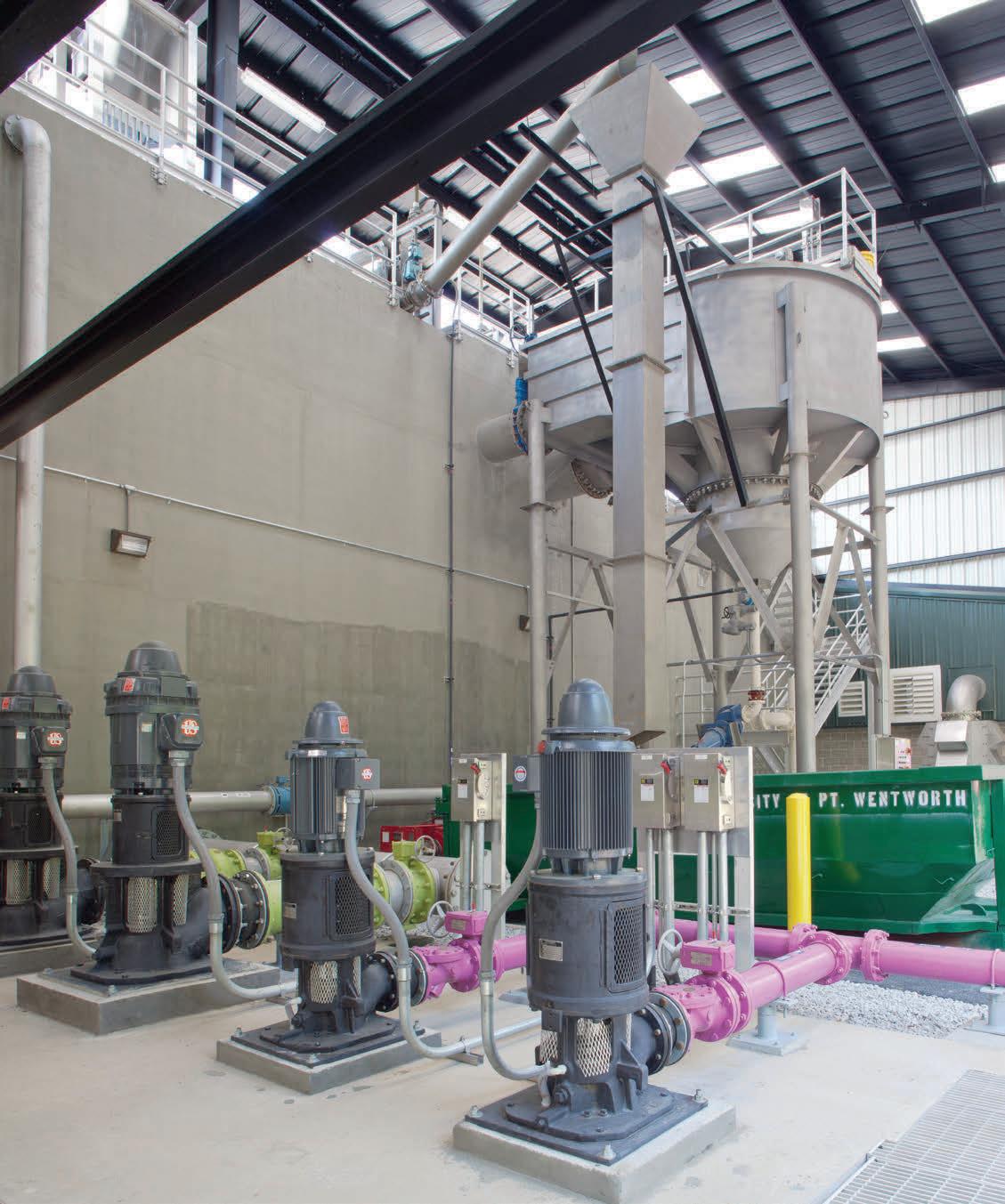
All grit removal systems are NOT created equal.


THE PROBLEM: Grit accumulation reduces tank and channel volumes and causes abrasive wear on equipment.
THE SOLUTION: Lakeside’s SpiraGrit® Vortex Grit Removal System
The Lakeside SpiraGrit® Vortex Grit Removal System is a flexible solution for removing grit from the wastewater treatment process. Its proven design features a relatively small footprint and provides efficient grit removal over a large flow range in both concrete structures and standalone stainless steel tanks.

Various grit pumping options — from flooded suction to topmounted self-priming — are available to meet your design requirements. We also offer a range of grit classifiers for grit dewatering and grit washers when additional organic removal for cleaner drier grit is required.









































































































In a world where access to clean, safe water is not a universal reality, the significance of water conservation and equitable distribution cannot be overstated. Recognizing this pressing need, the City and County of Denver produced the Denver One Water Plan, the first plan in Colorado. This movement seeks to revolutionize how we view, manage, and value water, advocating for integrated and sustainable solutions that benefit communities, economies, and the environment alike.
the inherent linkages between water systems, communities, and ecosystems, this movement seeks to foster resilience and sustainability in the face of growing water challenges.

At its core, the One Water movement is founded on the principle of unity. It emphasizes the interconnectedness of all water sources, from rivers and lakes to groundwater and stormwater. Rather than viewing these resources in isolation, the One Water approach advocates for holistic management strategies that consider the entire water cycle. By recognizing

OF THE ONE WATER APPROACH: Collaboration and Partnership:
Central to the One Water movement is the belief that meaningful change requires collaboration across sectors and stakeholders. By fostering partnerships between government agencies, businesses, nonprofits, and community organizations, the movement aims to leverage collective expertise and resources to address water challenges more effectively.
Equity and Inclusion: In a world where access to clean water remains a privilege rather than a right for many, the One Water
approach prioritizes equity and inclusion. This means ensuring that all communities, regardless of their socioeconomic status or geographic location, have access to safe and affordable water services. By centering equity in decisionmaking processes, the movement aims to rectify historical injustices and bridge the gap in water access and quality.

Innovation and Adaptation: As climate change and population growth place increasing pressure on water resources, innovation and adaptability are essential. The One Water movement encourages the adoption of innovative technologies and practices that promote water conservation, efficiency, and reuse. From green infrastructure and water recycling to nature-based solutions, these innovative approaches offer sustainable alternatives to traditional water management methods.


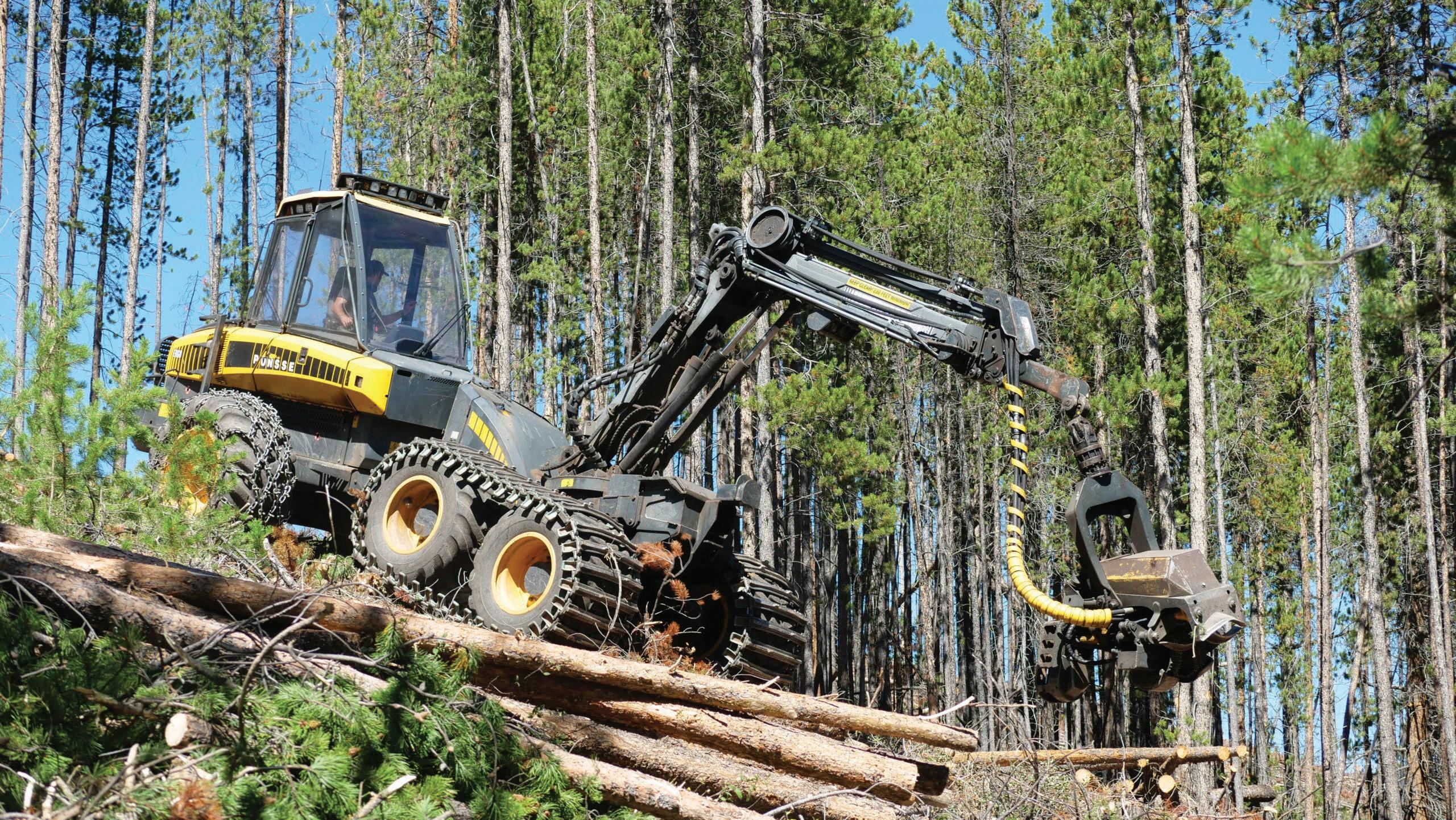
BENEFITS
Spanning multiple states, the Rocky Mountain region encompasses a diverse array of water landscapes and challenges. In the high-altitude reaches of the Rockies, snowmelt feeds iconic rivers such as the Colorado, the Yellowstone, and the Snake, sustaining ecosystems, agriculture, and urban centers downstream. However, as populations grow and climate change alters precipitation patterns, the region faces increasing pressure on water resources. In the face of these complex challenges, the principles of One Water offer a transformative framework for addressing water issues in the Rocky Mountain region. By embracing collaboration, innovation, and equity, the One Water approach can yield a host of benefits.
Water Security: By taking a comprehensive view of water resources and promoting efficient use and conservation, the One Water approach can help enhance water security in the Rocky Mountain region. Through strategies such as water reuse, stormwater capture, and
groundwater recharge, communities can diversify their water supplies and reduce reliance on finite sources.
Ecosystems: Healthy
ecosystems are the foundation of water sustainability in the Rockies, supporting biodiversity, recreation, and natural resource-based industries. The One Water approach emphasizes the importance of protecting and restoring natural habitats, safeguarding riparian areas, and preserving water quality to ensure the resilience of ecosystems in the face of climate change and human impacts.
In a region as diverse as the Rocky Mountains, ensuring equitable access to water is paramount. One Water prioritizes community engagement and inclusivity, empowering stakeholders from all backgrounds to participate in decisionmaking processes. By addressing historical inequities and investing in underserved communities, the movement aims to create a more just and equitable water future for all residents of the region.
Innovation and Adaptation: The Rocky Mountain region has a rich history of innovation and adaptation in water management, from pioneering irrigation techniques to advanced water treatment technologies. The One Water movement builds on this legacy of innovation, encouraging the adoption of cutting-edge solutions such as water recycling, decentralized water systems, and nature-based infrastructure. By embracing innovation, communities in the Rockies can meet the challenges of the 21st century while safeguarding their water resources for future generations.
Across the Rocky Mountain region, communities are embracing the principles of the One Water movement and implementing innovative solutions to address water challenges.
Denver Water’s “From Forests to Faucets” Initiative: Recognizing the critical role of forests in watershed health and water quality, Denver Water has launched a comprehensive initiative aimed at protecting


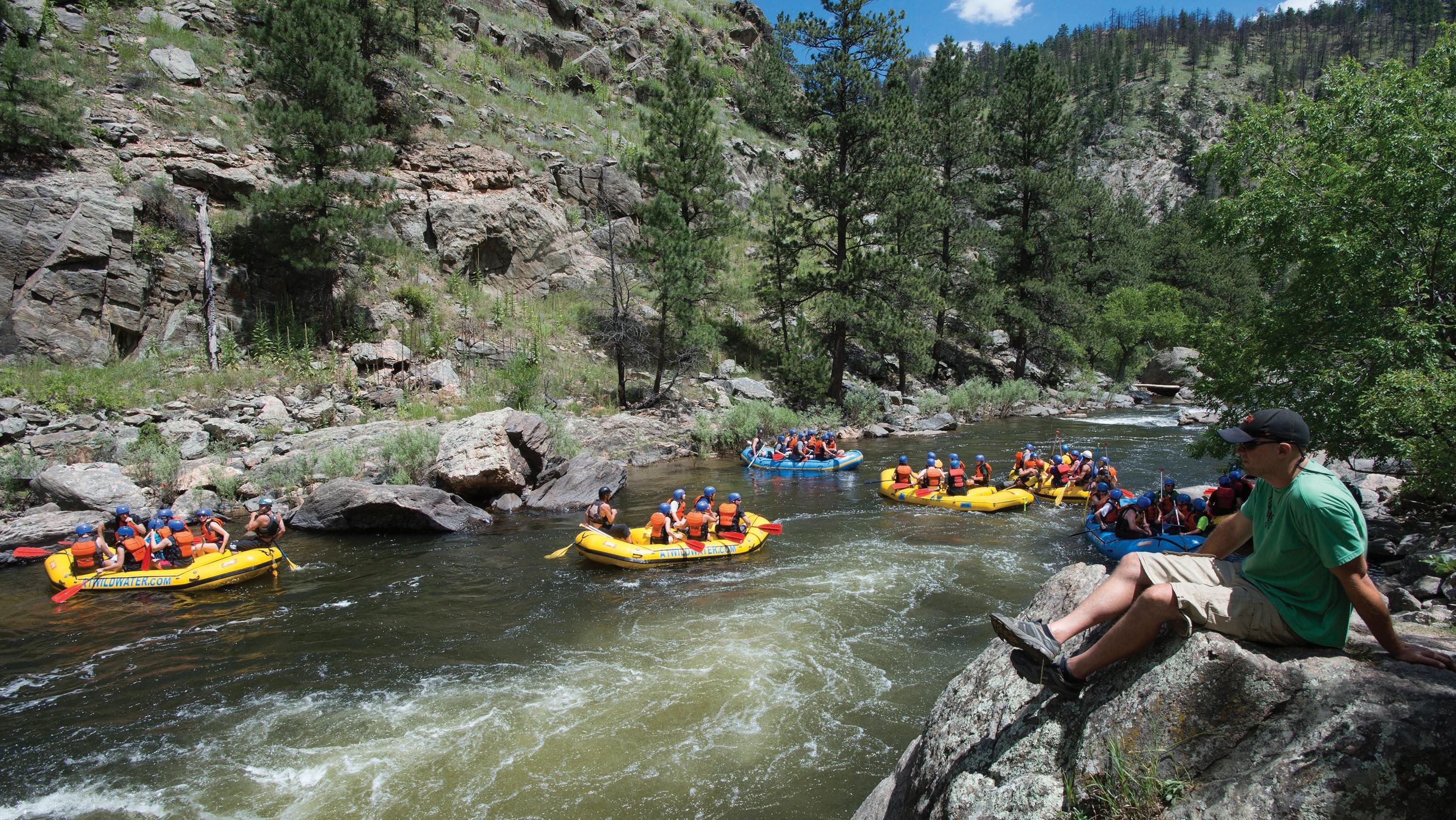
and restoring forested landscapes in the Rocky Mountains. By partnering with local stakeholders, implementing forest management practices, and investing in wildfire prevention, Denver Water is safeguarding the source of its water supply while enhancing ecosystem resilience.
The Cache la Poudre River in Fort Collins, Colorado: The Cache la Poudre River, which flows through the heart of Fort Collins, serves as a vital recreational and ecological resource for the community. In recent years, the city has implemented innovative stormwater management strategies, including green infrastructure and floodplain restoration, to improve water quality and reduce flood risk along the river. These efforts not only enhance the health of the river ecosystem but also create vibrant public spaces for residents to enjoy. While the One Water approach holds great promise for addressing water challenges in the Rocky Mountain region, significant obstacles remain. Inequitable access to water, competing interests among stakeholders, and the uncertainties of climate change pose
formidable challenges to implementation. By embracing collaboration and innovation, communities in the Rockies can harness the power of water to build a brighter future for generations to come – one where rivers run clear, ecosystems thrive, and all residents have access to clean, safe water.
To read more about One Water and the Denver One Water Plan, please visit denvergov.org/Government/ Agencies-Departments-Offices/AgenciesDepartments-Offices-Directory/Departmentof-Transportation-and-Infrastructure/ Programs-Services/One-Water









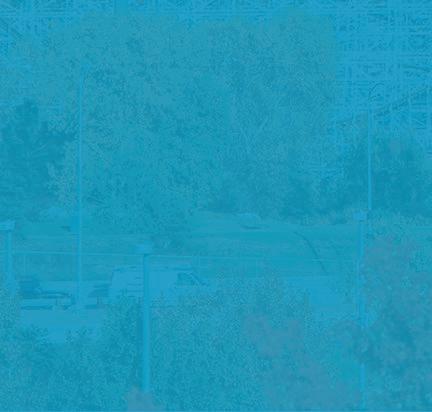






Climate change and development pressures led Denver to launch Colorado’s first One Water Plan
In September 2021 the City and County of Denver published the Denver One Water Plan, the first and only official One Water plan in Colorado.
It lays out Denver’s new approach to water management, born of the recognition that development pressures and climate change are stressing the city’s water resources and that for a sustainable future, all the water managers and planners need to work together to take advantage of the interconnected nature of the water cycle. The plan involves a number of entities that play specific roles within Denver’s urban water cycle: the City and County of Denver, Denver Water, Metro Water Recovery, the Mile High Flood District,
By Olivia Emmer








This article was originally published by Water Education Colorado and appeared in the Fall 2023 issue of Headwaters Magazine.
The Greenway Foundation, and the Colorado Water Conservation Board. Collaborating on the plan was a major integration of the historically siloed management of drinking water, wastewater, recycled water, stormwater, riparian health, recreation, and other water uses.
When the city’s most recent comprehensive plan was completed in 2019 – a plan meant to set the vision and goals to guide Denver into 2040 – it identified the need to create a holistic water strategy, setting the stage for the creation of the One Water plan. In fact, prior to publishing its One Water plan in 2021, the City and County of Denver did not have a citywide, holistic plan for managing water. After two years of meetings and community workshops, under the guidance of Carollo Engineers, the Denver One Water Plan was born.

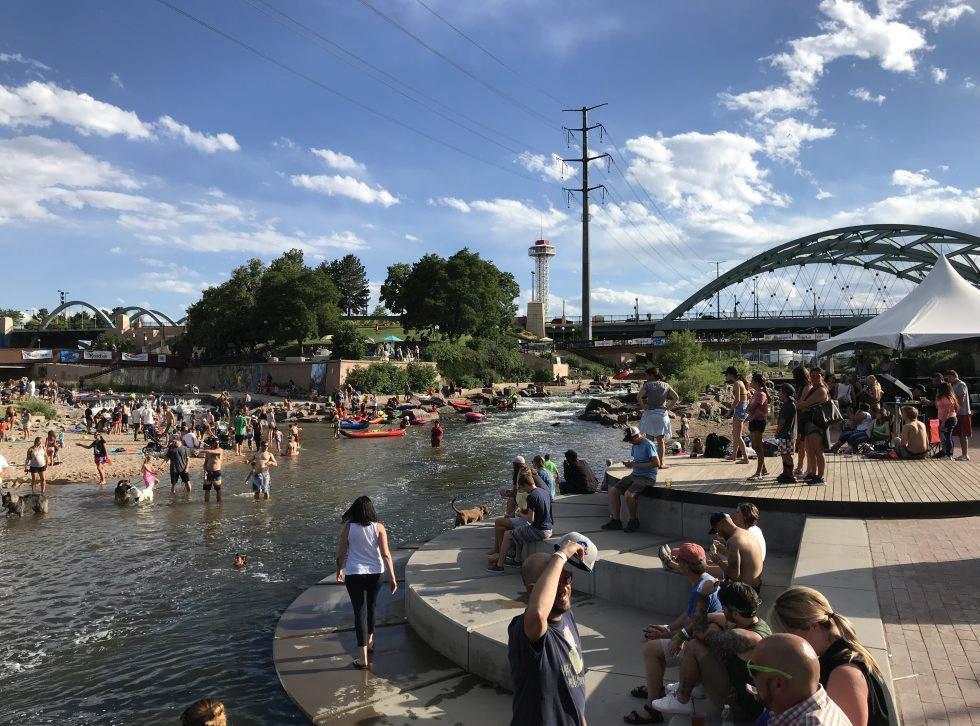
“It’s a framework for doing things collaboratively and holistically and aligning goals between all the different partners in the water cycle,” says Dave Jula, the City of Denver’s Department of Transportation and Infrastructure senior water services director, who played a leading role in the One Water planning process.
Now, two years since it was published, the Denver One Water Plan is still in its infancy, but already it is having meaningful impacts among partners who are finding efficiencies in their newfound collaboration.
“the Denver One Water Plan is still in its infancy, but already it is having meaningful impacts among partners who are finding efficiencies in their newfound collaboration.”
Denver’s One Water Plan lays out five goals to maximize benefits of water resources: promote institutional collaboration, implement multi-benefit projects and programs, foster community support, increase resilience and climate change preparedness, and implement integrated water management solutions.
“It’s really the first time that a lot of agencies have come together at once. In the past, we’d partner one by one,” says Greg Fisher, Denver Water’s manager of demand planning and efficiency. “So we would work with Parks [and Recreation] on one project and then we would work with Metro Water Recovery on another. It was very rare to get all the [water managers] together working on one project, even though clearly the benefits are so much bigger when you do.”
A major benefit of the One Water lens is how it ties water use and land use planning. Take Denver’s Green Code update, for example, which is based on the International Green Construction Code and now requires commercial and multifamily development to meet some provisions from the code. “Understanding how land use
planning actually impacts not only water usage, but runoff and collection and conveyance is where we’re able to get these layers of interaction,” explains Colin Haggerty, watershed manager for the Mile High Flood District (MHFD), referring to the code.
And the various partners in the Denver One Water Plan approach it with different interests, Haggerty says. “Denver Water is very interested in [seeing] what are the needs for the irrigation side of it for water usage? And then [MHFD] is looking at what are those runoff values? If it rains, how much water is going to run off of xeriscape versus natural grass? If it rains, how much fertilizer is affecting water quality based on the type of landscaping … We’re able to have those lines of communication and understand the impacts that our decisions are making on each other.”
These first two years have been about information-sharing and relationship-building. “The time-frame for paradigm shifts like One Water planning has to be measured in years,” explains Kevin Reidy, senior water efficiency specialist with the Water Supply Planning Section of the Colorado Water Conservation Board (CWCB). So there’s been limited progress on new work that puts the plan into action. But projects are moving forward.
One collaboration that exemplifies the goals of the Denver One Water Plan is the High Line Canal Stormwater Transformation project. Owned by Denver Water since the 1920s, the 71-mile-long canal was originally built in 1883 to deliver water for irrigation. Today it has become less a water delivery mechanism and more a recreational and ecological asset. “80% of that [water] seeps into the ground. It is probably one of the least efficient water distribution systems you could ever conceive of,” says Fisher. So over the past several years Denver Water started weaning

Dave Jula, senior water services director for the City of Denver’s Department of Transportation and Infrastructure, talks with the rest of the Denver One Water Plan One Water Leader (OWL) group at their monthly meeting in August 2023. During the meeting, the group discussed opportunities for outreach and information exchange and heard presentations, all to broaden the reach of One Water and keep OWL members in the know. (Eli Imadali)







people off of water delivered via the canal, instead relying on more efficient conveyances. Today, the canal is being retrofitted into a stormwater drainage canal. This multi-benefit project is a partnership between the High Line Canal Conservancy, the City and County of Denver, Denver Water, and the Mile High Flood District, as well as 11 local jurisdictions.
“The fundamental change in the canal is this reduction of irrigation water delivery, which means there won’t be consistent water in the channel,” explains Josh Phillips, director of planning and implementation for the High Line Canal Conservancy.
“So using the canal as green stormwater infrastructure is the ultimate multi-benefit project: It’s solving a stormwater challenge for the City and County of Denver while also meeting the community need of preserving this ecological amenity.”
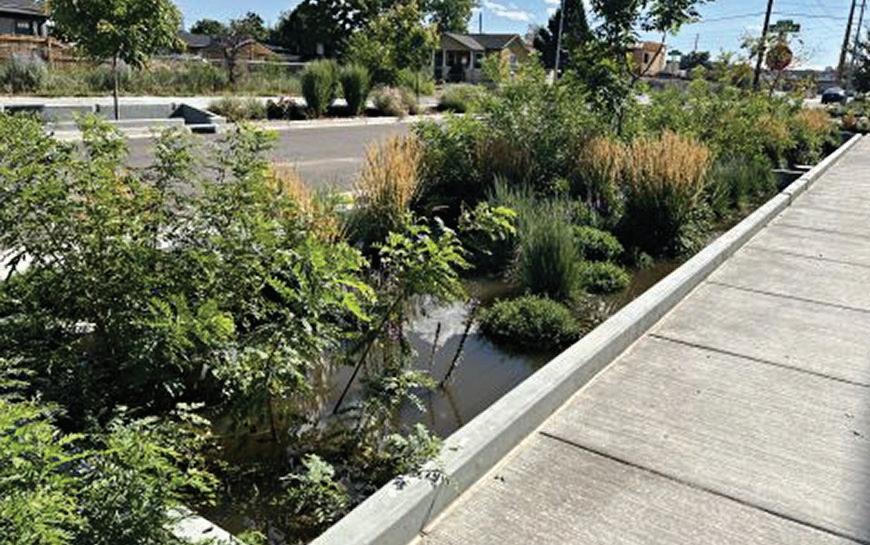
A streetside planter in north Denver filters stormwater to trap pollutants before they can make it to the South Platte River. This type of naturebased solution is a goal in the Denver One Water Plan, which calls on city planners to “integrate stormwater into the built environment in a socially, economically, and environmentally beneficial way by using low-impact development/green infrastructure to improve water quality, reduce runoff, and mitigate the risk of urban regional flooding.”
(Courtesy Denver Department of Transportation and Infrastructure)

“cities that focus on a more integrated water resource planning viewpoint, including the integration of water efficiency, land use planning and alternative water supplies, will be critical to Colorado’s water future.”
Directing stormwater into the canal provides water to the thousands of shade trees along the recreation corridor, and improvements to stormwater infrastructure can significantly improve water quality before stormwater enters local waterways. For example, in Denver’s pilot project on the canal, berms were installed that slow the movement of water, allowing more time for stormwater to seep into the ground and for sediment to drop out of the water. Additionally, keeping water in the canal for longer durations benefits the riparian ecosystem that grew and established itself along the canal when it was used for water delivery. Since the success of Denver’s pilot project, four more agencies have formalized stormwater use along sections of the canal’s path.
Like the High Line Canal transformation, many of the projects featured in the Denver One Water Plan were underway before the plan’s existence – providing inspirational examples of the benefits that a One Water approach can achieve. All the partners emphasized that the water infrastructure and planning projects the One Water plan addresses tend to require years of planning and years of implementation, meaning that it’s too soon to expect completely new projects to have been the result of the plan.
The major early benefit of the plan has been from the formation of the One Water Leaders, or OWL, group. This group, made up of representatives of the original partnering agencies, as well as some newly involved groups, gathers monthly to ensure the institutions are in close communication. Those meetings are attended by representatives of diverse branches within the City and County of Denver such as the Department of Aviation which manages the airport, Department of Transportation and Infrastructure, Parks and Recreation, Community Planning and Development, Climate Action, Sustainability and Resiliency, and Public Health and Environment.
“Providing the space for these different partners to collaborate on a regular basis has been so beneficial,” says Jula, “Let’s all get in the room together – that water cooler discussion can happen now.”
This sentiment was echoed by Perry Holland, director of comprehensive planning at Metro Water Recovery: “You actively have people meeting regularly to talk about opportunities. Previously, these discussions would happen because something specific would come up on a project, but to have regular conversations about it, I think is a real benefit.”
In addition to the “office-hours” effect of the monthly OWL meetings, Jula cites the educational benefit of having gone through the extensive One Water planning process with both government officials, partners and the community. “Now, [stakeholders] hear ‘One Water’ and they say, ‘That’s great. This is part of that? This was recommended in that? Great.’ You tie it to the comp[rehensive] plan too, and these two things really help get [projects] through the city efficiently.”
While there is concern in the Denver area related to water supply, drought, growth and the larger water scarcity issues playing out across the western United States, Jula explains that the last several decades have also brought increased attention to the South Platte River, which runs more than 12 miles north-south through the city. “We’ve had a long sordid history with the South Platte River. We treated it like most major cities have, as our open sewer, our dumping ground, our environmental toxic waste site. But over the last few decades we’ve invested a ton of money into revitalizing it and restoring it.”
Cue the Waterway Resiliency Program that has been in the works for more than a decade. The city, the U.S. Army Corps of Engineers and other partners are investing more than $500 million to restore ecosystems along 6.5 miles of the South Platte River’s course through the city. The work will also reduce flood risks along the river and key tributaries, Weir Gulch and East Harvard Gulch. The One Water planning paradigm asks the city and its partners to find other benefits to layer onto this project, such as green infrastructure, public education, policies to protect riparian areas, and more. And the monthly OWL meetings will ensure that as this major infrastructure project moves forward, all the potential partners will already be in communication about ways to add on benefits.
One way the city hopes to make progress on policy directly linked to the One Water Plan’s recommendations is through its new Healthy River Corridor Study. This study, published in June 2023, looks at the 12.5- mile stretch of the South Platte River that runs through Denver to identify land use strategies that could protect the investments being made in the river’s ecosystem. “There are all of these development pressures on the river,” says Jula, “but we don’t have very strong policies tied to land use when it comes to water in the city.” The next step would be to take the study results and turn them into policy, perhaps as ordinance or zoning.
Another major project the Denver One Water Plan highlights is the National Western Center campus redevelopment. Led by the National Western Center Authority and various partners including Colorado State University (CSU) Spur, the major redevelopment features a number of water-related improvements. The property has half a mile of South Platte River frontage whose restoration creates potential for parks and trails. The center’s collaboration with Metro Water Recovery
made it possible to install sewer heat recovery technology, which uses heat from wastewater to both heat and cool the CSU Spur campus, saving energy. This project is the largest of its kind in the United States and benefits both CSU Spur and Metro Water Recovery. Spur saves on energy use and Metro benefits by having heat removed from the wastewater entering their system, which helps the wastewater treatment facility meet its discharge permit conditions related to water temperature. While this project predates Denver’s One Water plan, the OWL group hopes their regular meetings will allow future projects to find similar benefits across agencies.
And there may be opportunities for similar work and projects across the state. The CWCB was an early supporter of Denver’s planning effort and continues to support its implementation.
“The CWCB would like to see One Water initiatives proliferate across Colorado,” Reidy says. “That will most likely look different in other areas, but cities that focus on a more integrated water resource planning viewpoint, including the integration of water efficiency, land use planning and alternative water supplies, will be critical to Colorado’s water future.”
Olivia Emmer is a freelance reporter and photographer based in Carbondale, Colorado. Her writing has been featured in Fresh Water News, Aspen Daily News and the Sopris Sun Emmer specializes in stories about the environment.


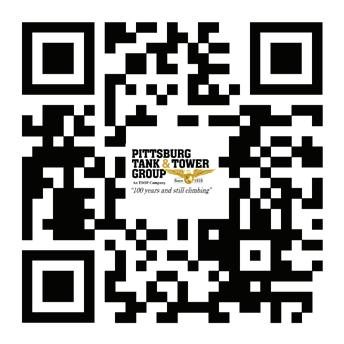

By Cindy Goodburn, Brian Tracy, and Angela Sims-Ceja, RMSAWWA Sustainable Workforce Committee
Here in the Rocky Mountain region, the public water sector is not without its challenges. Whether it’s the new rules on PFAS, the challenges of managing a lead line replacement program, or figuring out how to ensure you have enough water to meet the demands of a growing service area, utilities and the organizations that support them have their hands full. Yet with all these issues – and more – on the plates of our hard-working water sector professionals, one of the biggest challenges we face is finding and keeping the right people to get the job done.
That’s right – way at the top of everyone’s list is workforce – because without the right number of the right people with the right training, skills, and competencies (and attitude), it’s hard to protect public health, take care of the environment, and serve our communities like we want to and need to do.
1.0 AND 2.0
In May 2022, RMSAWWA held our first “workforce convening” in Castle Rock, Colorado. In that two-day workshop, we learned about the four pillars of a sustainable workforce – recruiting, retention, competency, and partnerships – and we combined presentations from our fellow water colleagues with insights gained from a national level of convenings of workforce issues and solutions.
Out of that workshop, we created something called the Recruiting and Retention Roundtable – a group of about


12-15 people, many of whom are human resources (HR) professionals – who have met several times since early 2023 (see Rocky Mountain Water January-February 2024). This group and the things we have discussed are the drivers behind our second convening, which we held on May 7 and 8, 2024 at Metro Water Recovery’s Northern Treatment Plant Visitor’s Center in Brighton, Colorado (thanks again, Patricia Lopez and team!). It was a great group, and we had a very packed agenda.
A robust group – 34 water sector professionals from 23 different organizations, including 19 of 34 with a role in HR and a full group total of 647 years of experience in the water sector and/or HR – came together to both share and learn from each other, with a host of guest speakers, about the challenges we are all facing in recruiting the workforce we need, followed by a whole different set of challenges to keep them.
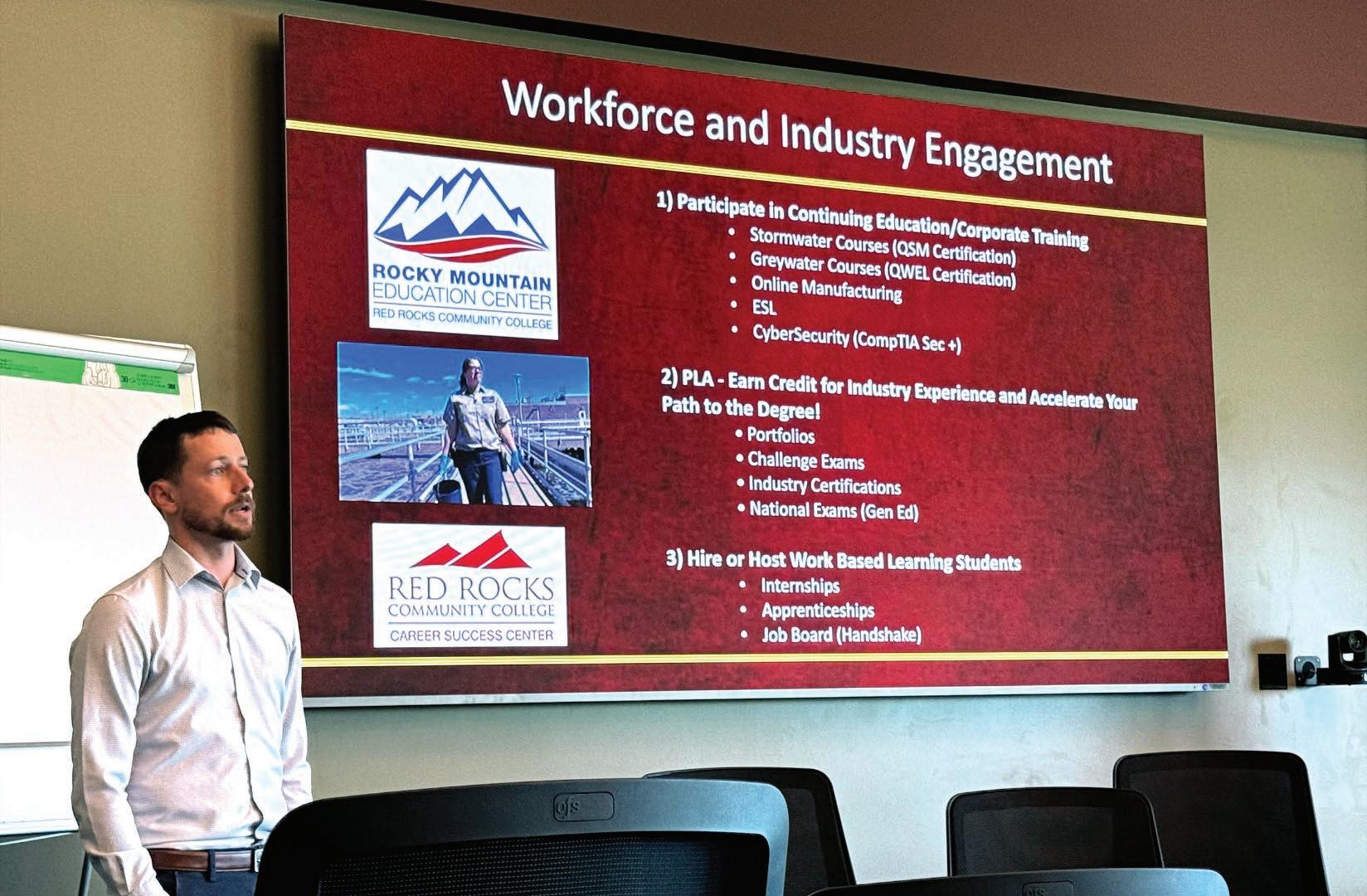

Included are the topics we covered:
• A panel of five experienced water professionals – with a combined 127 years in water and/or HR – shared overall challenges and best success stories.
• Details about the struggle with job descriptions and the need to collaborate internally to get the right people.
• Approaches are being taken both at the front end during recruiting and hiring and again while an employee is moving up and through the organization.
• Insights into utility culture and the effect it has on retention – including work-life balance, flexible schedules, and creative ways to engage staff.
• How two of our utility participants tag-teamed on an apprenticeship.
• How local high school students are earning concurrent credit and getting hands-on experience at three area utilities.
• Existing programs at Emily Griffith and Red Rocks – and how our sector organizations might collaborate.
• Programs and assistance are available for workforce centers, including something called a sector partnership.
The next day, the group was presented with a summary of all the challenges and success stories that had been shared by the first day’s speakers. Then, the full group was split into six smaller groups and given the assignment to identify the top three most important things we need to work on. This generated a total of 18 ideas, which were in turn combined tweaked, and creatively rewritten, resulting in five top areas of focus:
1. Creating the right workplace culture that supports and fosters the proper setting, programs, and tools for a sustainable workforce.
2. Building a beginning level of awareness of the water sector, especially for school-age kids.
3. Building a ‘bridge’ into the water sector as a career for a spectrum of prospective employees – from high schools, trade schools, and colleges to second careers and more.
4. Getting prospects hired and on the team – with a three-part focus on recruiting, interviewing, and onboarding.
5. Building a meaningful and encouraging career path to both help staff grow personally and professionally and to encourage retention in the organization (and sector).
Next, workshop participants selected one area of focus they wanted to work on, split themselves up into five groups, and continued to work (it was a workshop, after all). By the end of the day, each of the groups crafted a mission/purpose statement for their area of focus, developed three to four core strategies, and created a first cut/very draft work plan for one of the core strategies. For one, it might be a checklist for all the ingredients needed for a great interview; for another, it might be a meeting with high school teachers or a workforce center; and for another, it might be another roundtable/ think tank on sustainable workforce culture. Whatever the case, the groups didn’t just
come to share and learn, they also left with some work to do and the beginnings of a game plan to do it.
At the next full meeting of the RMSAWWA Sustainable Workforce Committee (tentative 9 a.m. to noon July 9), we will confirm the five action groups and ensure progress is being made on the ideas that were generated on day two. If you are interested in learning more about what the groups are doing – or joining them – send a note to either Cindy Goodburn at cindy@cgoodburnconsulting.com or Brian Tracy at btracy@cityofgolden.net.
For those readers who missed the chance to participate in Brighton, don’t worry, we will be presenting the results of the workshop and recreating two of the outstanding presentations as part of a special session on Monday morning, August 26, at the Rocky Mountain Water Conference in Keystone, CO. It has the same title – Building and Filling the Water Workforce Pipeline. Please join us!






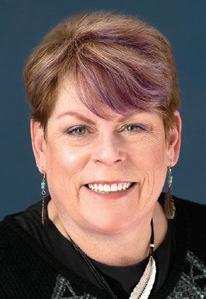
Cindy Goodburn, is both the chair of the RMSAWWA Sustainable Workforce Committee and the AWWA Workforce Strategies Committee. She has 30 years of experience working at/with utilities on workforce issues.


Brian Tracy is vice-chair of the Sustainable Workforce Committee and works as the Deputy Director of Public Works for the City of Golden.
Angela Sims-Ceja is a member of the Sustainable Workforce Committee and works as the Water Technical Operations Superintendent for Aurora Water.










xhibitor and Sponsor registration for the Rocky Mountain Water Conference at the Keystone Conference Center in Keystone, Colorado is now open!
The conference will be held Aug. 25-28, 2024. Please stay tuned for updates to the exhibit and sponsor registration page on the RMSAWWA and RMWEA websites.
Choosing to exhibit and/or sponsor at the Rocky Mountain Water Conference positions your organization to network with more than 1,000 water professionals from Colorado, Wyoming, and New Mexico. This conference is the premier event for consultants, operators, utility managers, and manufacturer representatives in our region. Our attendees are engineers, operators, and water professionals from large and small utilities, with a broad range of interests and technical needs.
New this year! The Exhibit Hall will only be open from 3 to 6:30 p.m. on Monday, Aug. 26 and Tuesday, Aug. 27. Events will be hosted in the hall during this time to provide exclusive time with attendees.
Booths are $1500 for a standard booth and $1700 for a premium. Each booth includes two full conference registrations (registration for booth personnel will open up later; you will only select your booth(s) at this time). Any additional registrations can be purchased at the full conference rate to attend sessions or as an Exhibit Hall Only to attend the exhibit hall and social events.
If there are any questions, please contact info@gcpwest.com.
Please see the Exhibitor Rules for what›s included in a booth, set up and dismantling hours and more information.
You can also preview Sponsor Opportunities. You’ll be able to register for sponsorships with your booth.
For information on the conference, including hotel reservations, visit www.RockyMountainWaterConference.org/Reg24/Travel. For reservations, you can also call 855-948-0696 and reference BKRRMW24.
Thank you for your support of RMSAWWA and RMWEA.



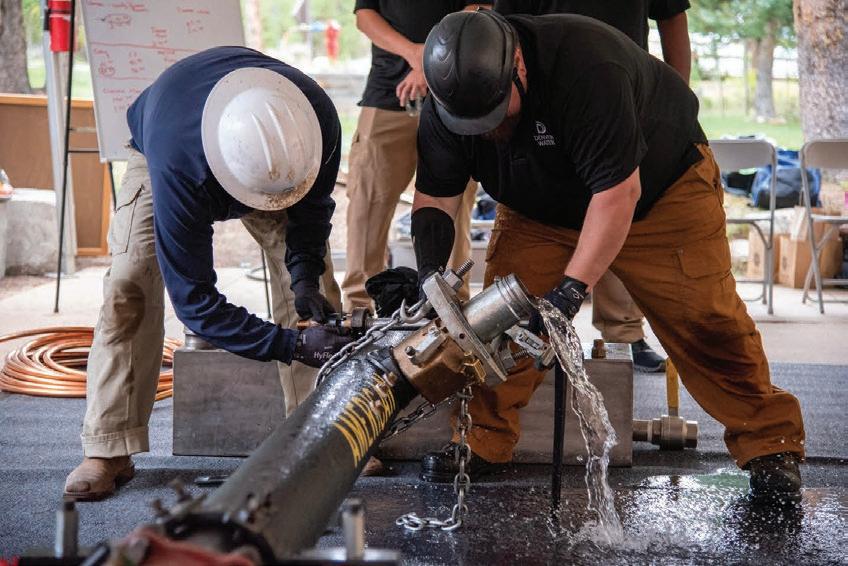

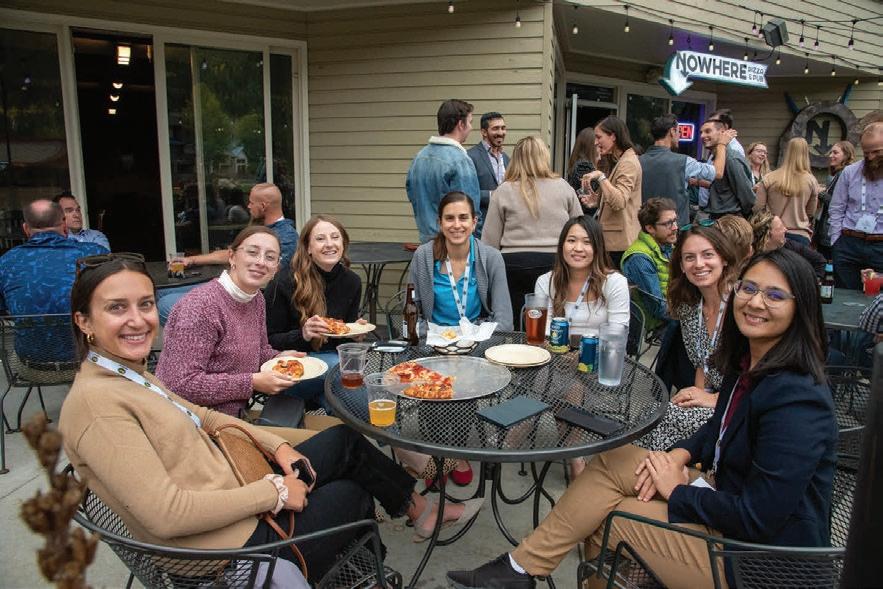













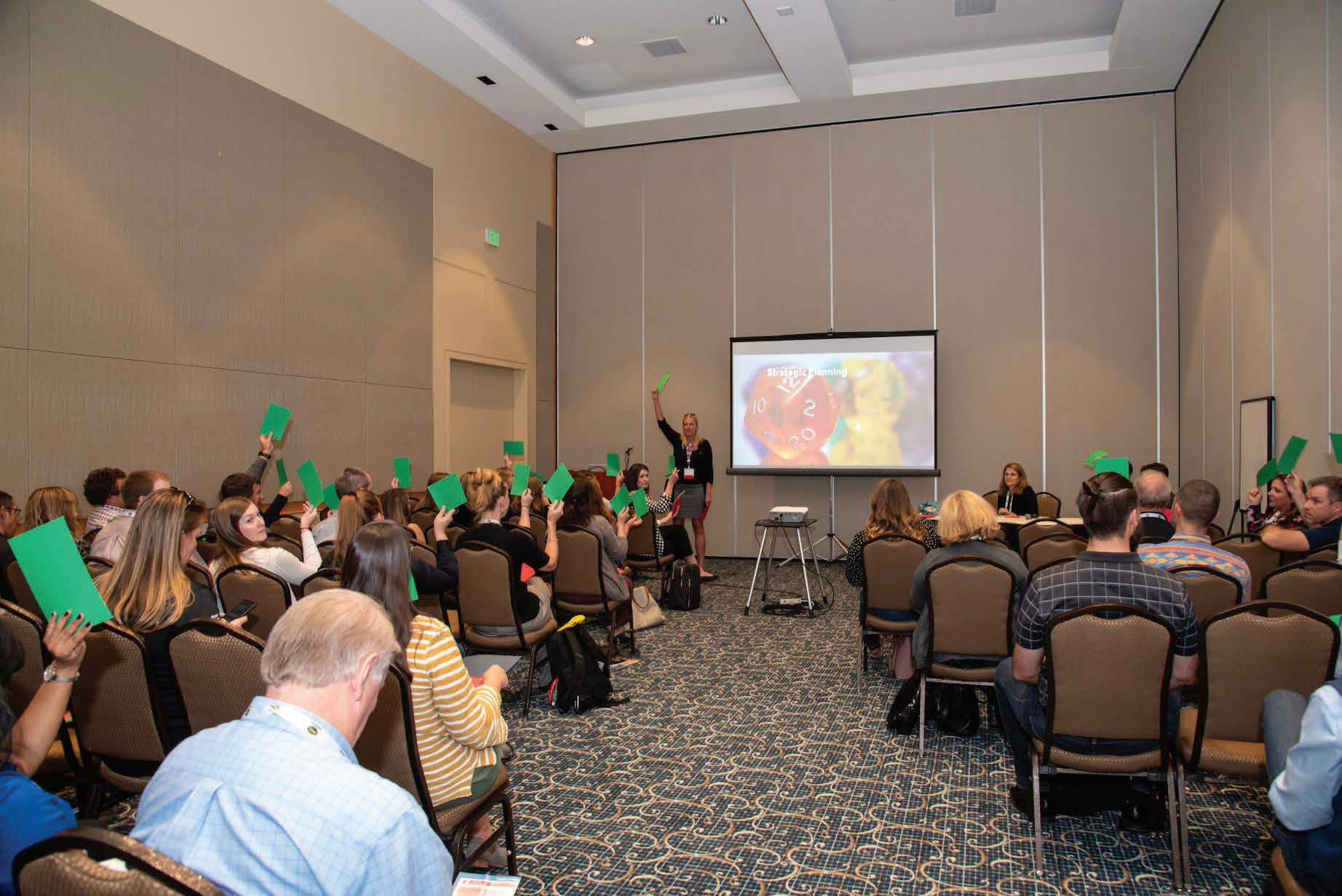



















SEPTEMBER 18-19, 2024 |
Stay ahead of the curve in the water industry by joining us at the Grand Junction Convention Center for two days of innovation and insights. This annual event brings together approximately 250 water industry professionals and experts to address pressing challenges and explore the latest developments and innovations in the field.
The 2024 conference promises an exciting program with 30-40 technical sessions, providing attendees with valuable opportunities to earn TUs (training units) in a variety of subjects including water and wastewater treatment, distribution systems, management/ regulatory, reuse, residual treatment, and more.
Attendees can also discover the latest advances and solutions in the water and wastewater industry by exploring the exhibit hall.
Don’t miss the chance to have some fun while networking and building meaningful connections with industry peers at Wednesday evening’s social event. Whether you’re an established professional



Wei
Wei

or just starting your career in the water sector, this conference will equip you with knowledge, tools, and connections to improve your job performance and advance your career.
Visit the RMSAWWA website (www.rmsawwa.org/WCWWC ) for registration and exhibitor/sponsor opportunities.
Wei eld’s Industrial &Water/Wastewater division has a broad range of current and past projectexperiencespecializing in industrial applications such as water and wastewater treatmentfacilitiesandtheirrelatedpumpstations.Ourportfolioincludespumpstations, lift stations, and streetscapes for local municipalities, cities and towns.



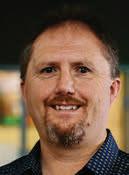


CURTIS MILLER
M
/Wastewater









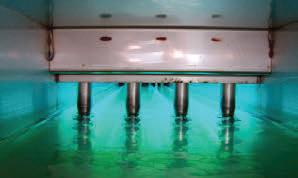


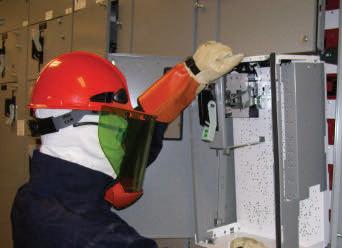








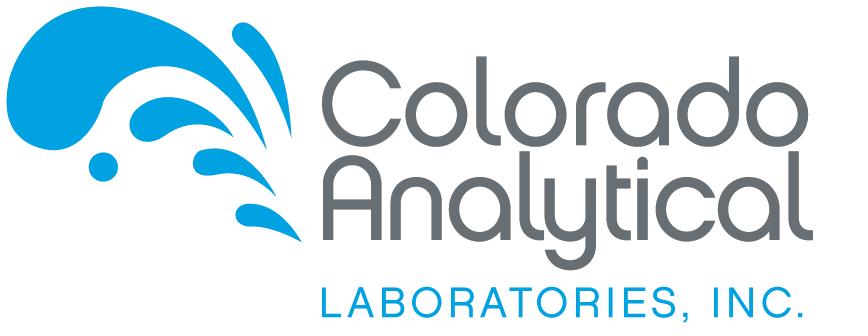

Biochemical Oxygen Demand
Total Suspended Solids
Ammonia-Nitrogen
Nitrate and Nitrite Nitrogen
Kjeldahl-Nitrogen (TKN)
E-Coli, Total Coliform
Metals by ICP-MS and ICP-OES
SOC/VOC
Biosolids-503 Regs/Fecal Coliform
NPDES Requirements
DMRQA Study Participant

Organic Contaminants (SOC/VOC)
DBP (THM/HAA, TOC/ALK)
Inorganic Contaminants (Metals)
Nitrate and Nitrite Nitrogen
Copper and Lead
Total Coliform
Fluoride
Metals by ICP-MS and ICP-OES
Compliance Auto-Ship Bottle Program
VISITONEOFOURCONVENIENTLOCATIONS FOR MODERNDAYTECHNOLOGYAND OLD-FASHIONED SERVICE!
Commerce Cit y Laboratory 10411 Heinz Way Commerce City, CO 80640
Lakewood S ervice Cent er
610 Garrison St. Unit E Lakewood, CO 80215
Contact us
303.659.2313 www.coloradolab.com info@coloradolab.com


























By Libby McKenna, Sierra Johnson, and Jamie Lefkowitz, Brown and Caldwell
o you hear “programming” and feel your eyes glaze over?
Coding can be daunting, and you might picture confusing green columns of data, like in “The Matrix.” However, there are intuitive coding languages, such as R or Python, that can help people unfamiliar with programming enter the world of data science. We’ll focus on R here, as that’s the language we primarily use. Beyond being accessible, R is capable of complex analyses required for our
industry, such as optimizing treatment processes or modeling water quality for different chemical doses. R can simultaneously analyze multiple operating conditions and treatment variables. This article will talk about R as a superpower and use a case study to show how R was more powerful than Excel for a complex analysis.
So how is R useful? As an example, if you’re trying to understand the impact of various alum doses on your water quality,




you must account for pH chemistry, which requires an iterative process to solve for H+ concentrations. In R, these calculations can be programmed to operate behind the scenes, allowing you to focus on the treatment question, not the water chemistry. These under-the-hood R calculations power the models you’ll use for your chemical dosing analysis. You don’t need to know how the engine works to be able to drive the analysis. The calculations can then be applied to

an entire data set. R can quickly analyze millions of rows of data. Think how it could handle your SCADA data!
Typically, Excel is used to perform these calculations because it’s intuitive and most
people have experience with it. Excel is useful for looking at a handful of options. However, Excel has its limitations when it comes to complex modeling. Manually changing treatment scenarios, water
qualities, chemical doses, and more can be tedious. To see the bigger picture, you need many points to uncover a pattern. Metaphorically, Excel shows you a few trees, R shows you the forest. To help create




























































































































































































































your forest of scenarios, R can apply every variation to every scenario. This figure shows how a variety of flow scenarios (green table) is joined with a variety of chemical dose scenarios (blue table), for a total of 12 scenarios to model. The programmed water quality calculations can then be applied to each of these scenarios in a couple of lines of code. With R storing complex calculations under the hood, the review process is much easier. After the calculations have been rigorously reviewed, they can be reused in many projects. The reviewer can focus on the water treatment analysis (did you consider enhanced coagulation?), rather than getting lost in the weeds of acid-base equilibrium chemistry (did you account for a temperature adjustment in this calculation?).
Let’s see how these functions and scenario generation apply to a water treatment problem.
The City of Brighton has high hardness in its source waters and its new water treatment plant includes plans for four new pellet softeners. The city identified additional groundwater sources to supplement their current supply. Due to the low hardness in the new groundwaters, there is an opportunity to reduce pellet softening costs through blending. A model was developed to understand how these new wells could impact future softening operations. When the plant was designed, an Excel-based mass balance model was used to estimate water quality at each treatment process. As the mass balance evolved, the Excel model was unable
Table truncated



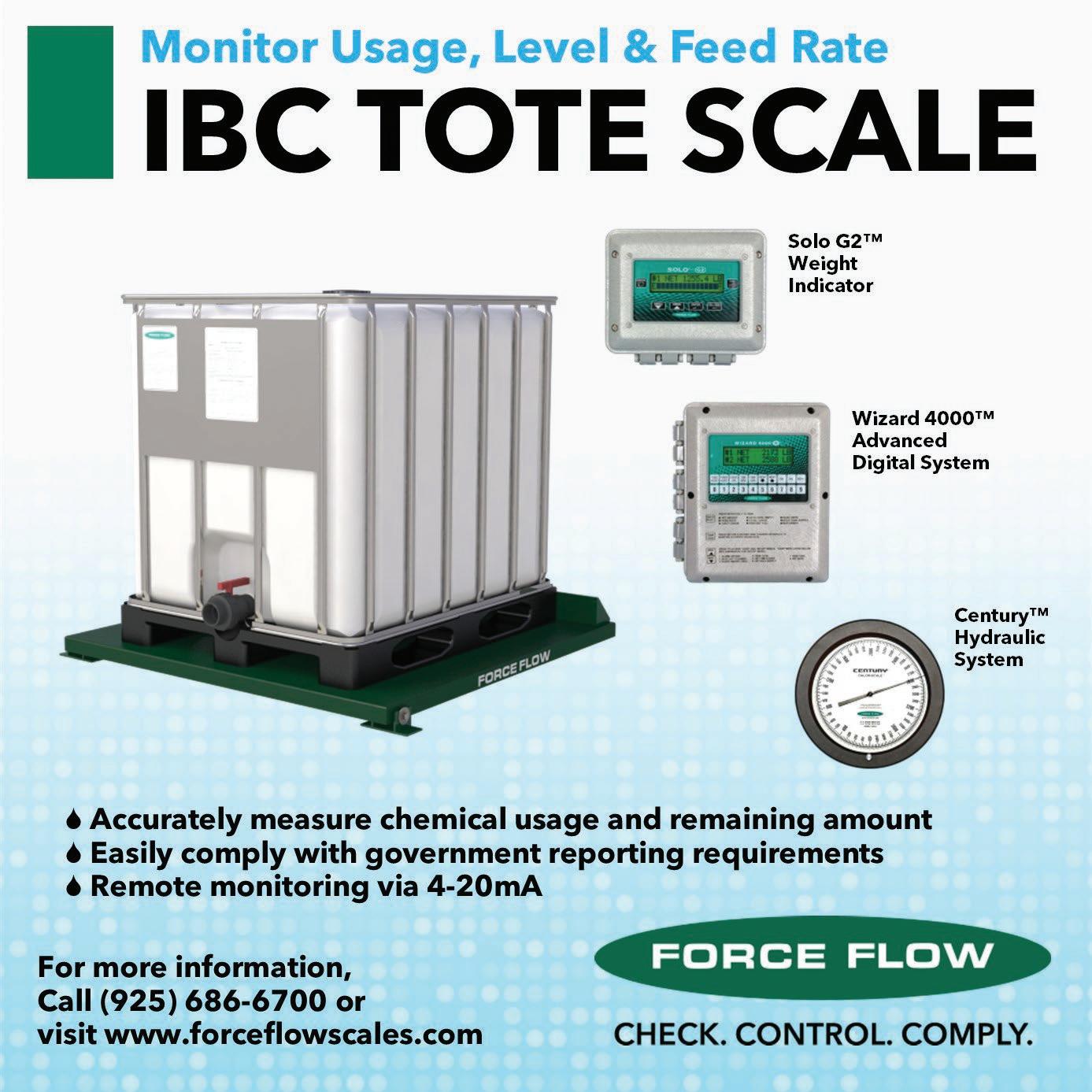








to handle the growing complexity. The new model required blending in the new groundwater sources, recycling pellet softener water, bypassing some treatment, and varying chemical doses, all while accounting for the underlying intricate pH chemistry. Thus, the model was developed in R to apply these analytical layers to hundreds of scenarios and take advantage of the pH chemistry calculations that had already been developed and reviewed.

This analysis sought to strike a balance between blending, bypassing, and recycling to understand the impact these new wells would have on hardness and to optimize pellet softening operation. The analysis found that increased contributions from the new wells would have a modest impact on hardness concentrations and could change the flow rate for turning on a new pellet
softener from 7 MGD to 9 MGD, therefore potentially reducing operating costs. Additionally, the model was able to estimate caustic use for the scenarios, showing up to a 26% reduction in daily chemical usage, the most significant O&M cost for this process.

An Excel model would have required heavy manual effort to reproduce all 1,200 scenarios modeled. Cherry-picking 5-10 points for this analysis may not have revealed the big-picture patterns and the resulting shift in pellet softener operation. R can help utilities optimize, but it can also be used with emerging technologies, like machine learning. Machine learning, and other data science techniques, offer the opportunity to mathematically discover patterns in large amounts of data. Those patterns can go beyond traditional statistical correlations and include feedback mechanisms that identify idealized operating routines for water treatment facilities.

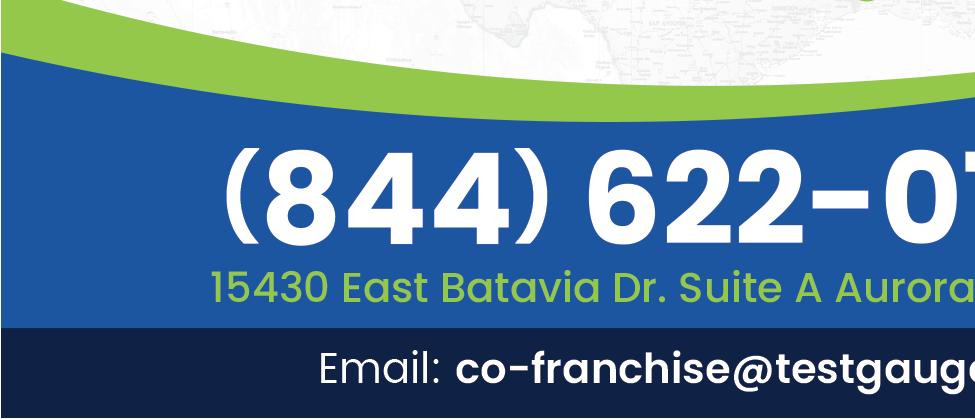
Data science libraries are available in R packages, enabling data scientists to quickly call on established machine learning algorithms to experiment with data that is already available and formatted correctly. Additionally, data scientists and water treatment practitioners are discovering that hybrid modeling – which combines process-based models, such as pH chemistry, with data-driven models – can be used to represent complex treatment processes. Transitioning traditional calculations and data processing from spreadsheets to R enables future integration with advancements in data science.


Libby McKenna (PE) earned her master’s from the University of Nevada, Reno. She is now a process engineer at Brown and Caldwell. Her first exposure to R was on her first day of work, and now uses R daily for modeling and data visualization. lmckenna@brwncald.com

Sierra Johnson (PE) is an environmental engineer at Brown and Caldwell with a master’s degree from University of Colorado. She specializes in data analysis and modeling using historical and bench/pilot data to support process decisions. Sierra is a self-taught R user and has trained several people in the language. sjohnson2@brwncald.com

Jamie Lefkowitz (PE) attended Villanova University for her master’s degree and currently leads the analytics and data science team in Brown and Caldwell’s digital solutions department. She specializes in advanced analytics, modeling, and internet-of-things applications. jlefkowitz@brwncald.com





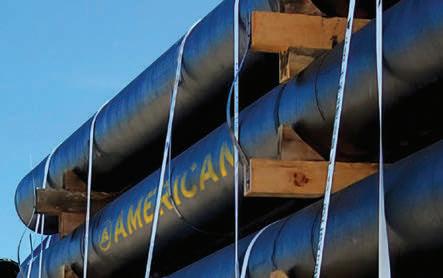
RECYCLED. RECYCLABLE. IT’S JUST HOW WE ROLL.










CHOOSE SUSTAINABILITY. CHOOSE DUCTILE IRON. A pipe isn’t just about moving water from here to there. It also needs to safeguard generations to come. Our ductile iron pipes are made from more than 90% recycled material and 100% recyclable at the end of its service life.
AMERICAN iron pipe is more than the superior long-term choice. Our pipe delivers toughness, superior performance, and lower life-cycle costs, which means AMERICAN also delivers on an ironclad promise to the future.

DUCTILE IRON PIPE FLOW CONTROL
INTERNATIONAL
SPIRALWELD PIPE STEEL PIPE
















Designed for Flexibility

Measure up to 20 parameters per controller and easily expand your network with a modular, plug-and-play system.
Designed for Process Optimization
Improve process control and increase operational efficiency with accurate, continuous water quality monitoring.
Designed for Cost Savings






Reduce operating costs and save on chemical, energy, and water usage with better visibility into your process. The proof is in the data.







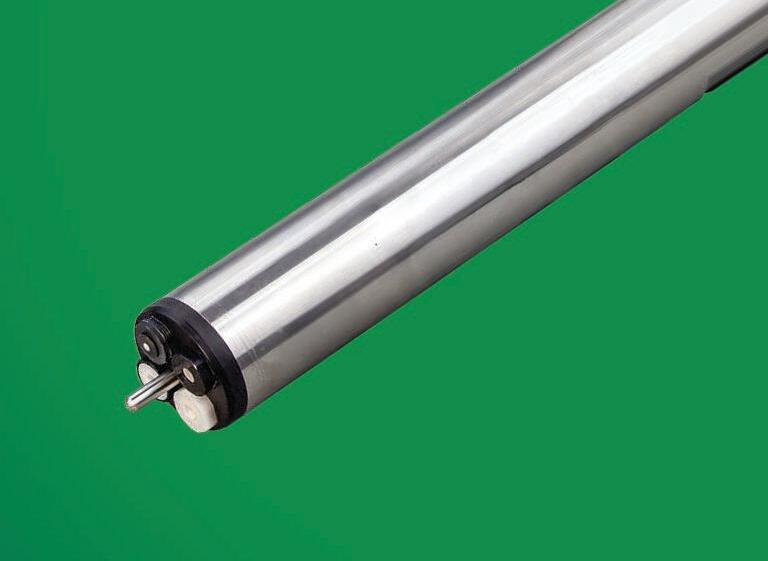





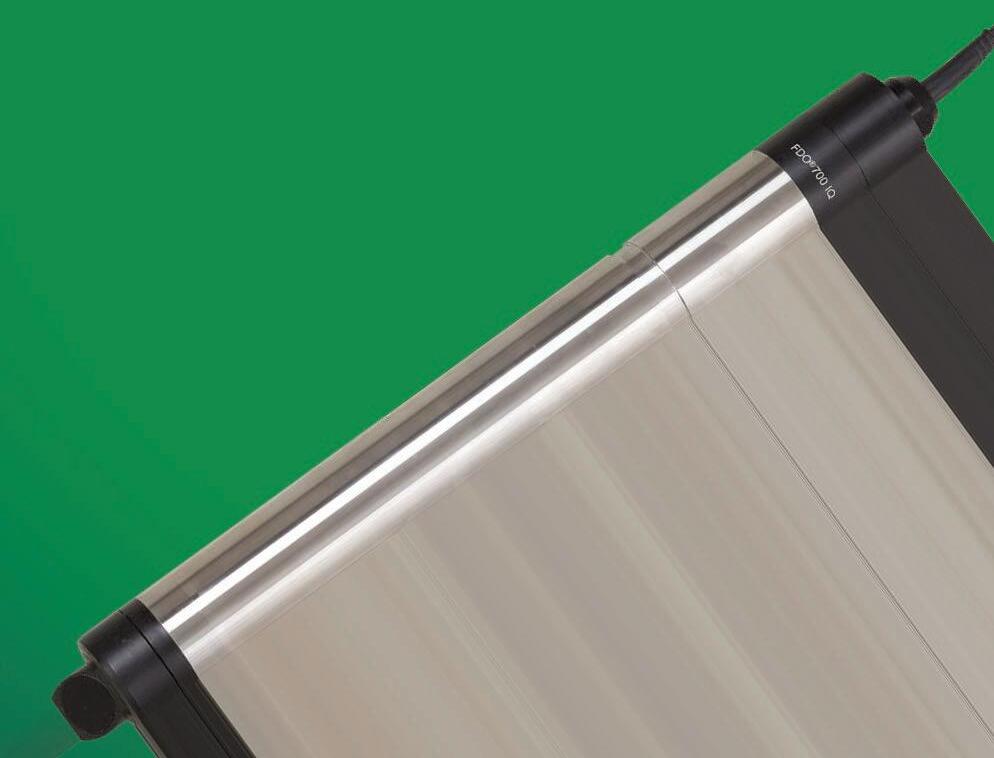









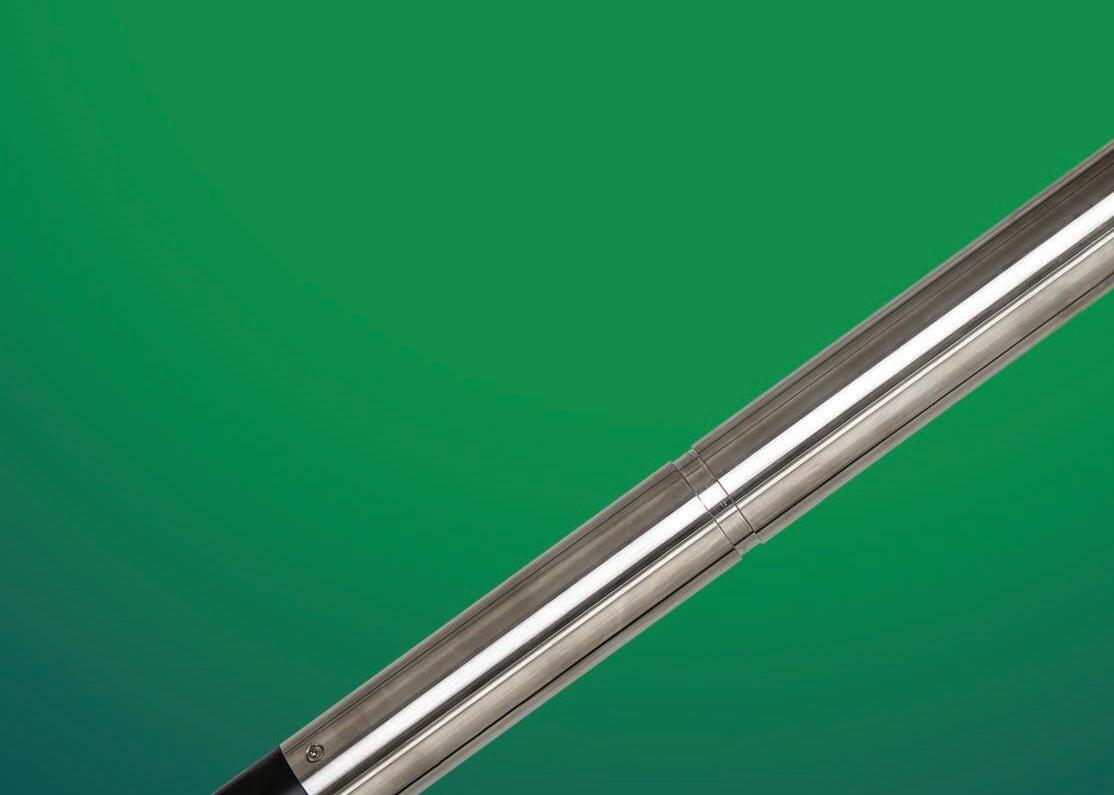







AWWA Connections
U.S. drinking water utilities will be required to provide water quality information with greater clarity and with accessibility in mind under the final Consumer Confidence Report Rule Revisions announced in May 2024.
The rule’s first compliance date is January 1, 2027, meaning that water systems are expected to comply with the revisions beginning with Consumer Confidence Reports (CCRs) due July 1, 2027 (summarizing data from 2026).
With input from member volunteers, Sections, and partner organizations, the American Water Works Association’s (AWWA) Government Affairs Office provided detailed comments to the U.S. Environmental Protection Agency (EPA) about the substance and process of the proposal, including suggestions for clarifying language and revising unmanageable deadlines. Responding to AWWA comments on the proposed rule, EPA removed language that brought into question if water could be described as ‘safe,’ even if it met all standards.
A requirement in America’s Water Infrastructure Act of 2018 tasked the EPA with ensuring that annual drinking water quality reports are more understandable and accessible to the public. In April 2023, EPA proposed updates to the rule.
Some key changes in the final CCR rule include:
• A requirement that water systems serving greater than 10,000 people must provide a CCR twice per year
The deadline for the first report will remain July 1, with the second delivery taking place by the end of that year.
• Increased requirements for translation and accessibility of the CCR for those with limited English proficiency and/or disabilities This includes information where consumers can either obtain a translated copy of the report or assistance in the appropriate language.
• Addition of a summary section at the beginning of the CCR containing specific key elements. This should include information about any violations and compliance, contact information, and how to request a paper copy of the report.
• Codification of most existing electronic delivery options into regulation. It is valid for water systems to provide notice via mail or email that the CCR is available, with a direct link to the report.
• Shortened timeline for certification of CCR delivery to the primacy agency. The rule requires that water systems certify that delivery of the CCR has been completed within 10 days of the delivery deadline. The previous deadline was three months.
• Primacy agencies are required to provide all compliance data annually to EPA. This includes all compliance monitoring and related monitoring data for national primary drinking water standards. States have three years before the first submission is due.
“All U.S. community water systems are impacted by the revised CCR Rule, and we encourage them to begin planning now for these changes and to collaborate with their primacy agency on how to





























































































































































































































































































implement them well in advance of the 2027 deadline,” said Adam Carpenter, AWWA’s energy and environmental policy manager.
“The collaboration of AWWA and its member volunteers, sections, and partners was very effective in helping the EPA develop constructive revisions to the CCR Rule that will hopefully strengthen communications and trust between drinking water providers and their communities and consumers,” said Matt Junker, vice chair of AWWA’s Public Affairs Council.










100% Collaborative Delivery


By fostering collaboration, embracing innovation, and integrating cutting-edge technologies, Haskell delivers sustainable water infrastructure that not only supports your community today, but ensures a resilient future for generations to come.











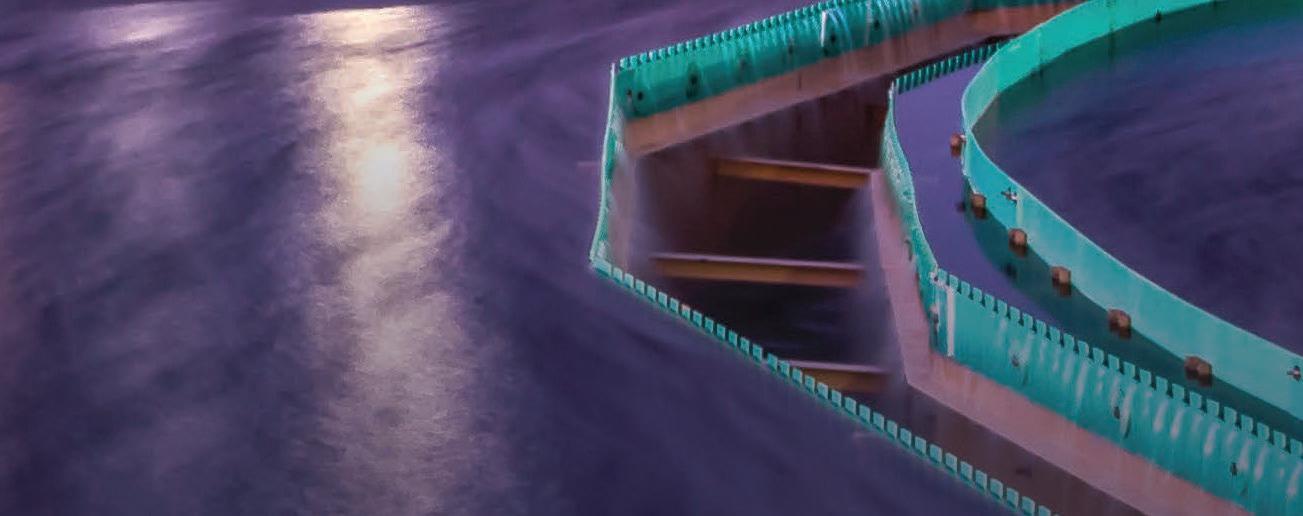

Scan to learn more about our commitment to you. We Create Things That Matter.


By Mami Hara, CEO, US Water Alliance
The U.S. Water Alliance is thrilled to announce that the next One Water Summit will be in Pittsburgh, Pennsylvania, July 8-11, 2025. We’re looking forward to holding our signature event in a city that has served as a national model for centering water equity, advocating for sustainable water policies, removing lead service lines, and driving large-scale water infrastructure projects.
One Water Summit is the nation’s premier gathering of cross-sector water trailblazers, experts, and enthusiasts. Since 2016, One Water Summit has sparked innovation by creating unique spaces for collaboration – centered around timely water challenges and solutions. To illustrate the power of this event and our collective One Water community, I’m also pleased to share the One Water Summit 2023 Commitments to Action made by the incredible group of delegates who attended last year’s Summit in Tucson. You can find more information on the 2023 Commitments to Action at uswateralliance.org/wp-content/uploads/2024/05/One-WaterSummit-2023-Commitments-to-Action.
One Water Summit 2023 featured,
• 972 registrants from 322 cities across 46 states.
• 143 speakers in our four plenaries, five learning labs, and 20 workshops.
• 18 delegations that made commitments to action.
• A celebration of eight US Water Prize winners, as well as recognition of the recipients of Delaware State University’s Global Water Challenge.
• A fireside chat between US Water Alliance CEO Mami Hara and former US Water Alliance CEO Radhika Fox.
For questions regarding 2025 Summit delegations, please email delegations@uswateralliance.org.
Keep an eye on your inbox for more information on registration and hotel blocks, as well as nominations for the next US Water Prize. In the meantime, mark your calendars for July 8-11, 2025.
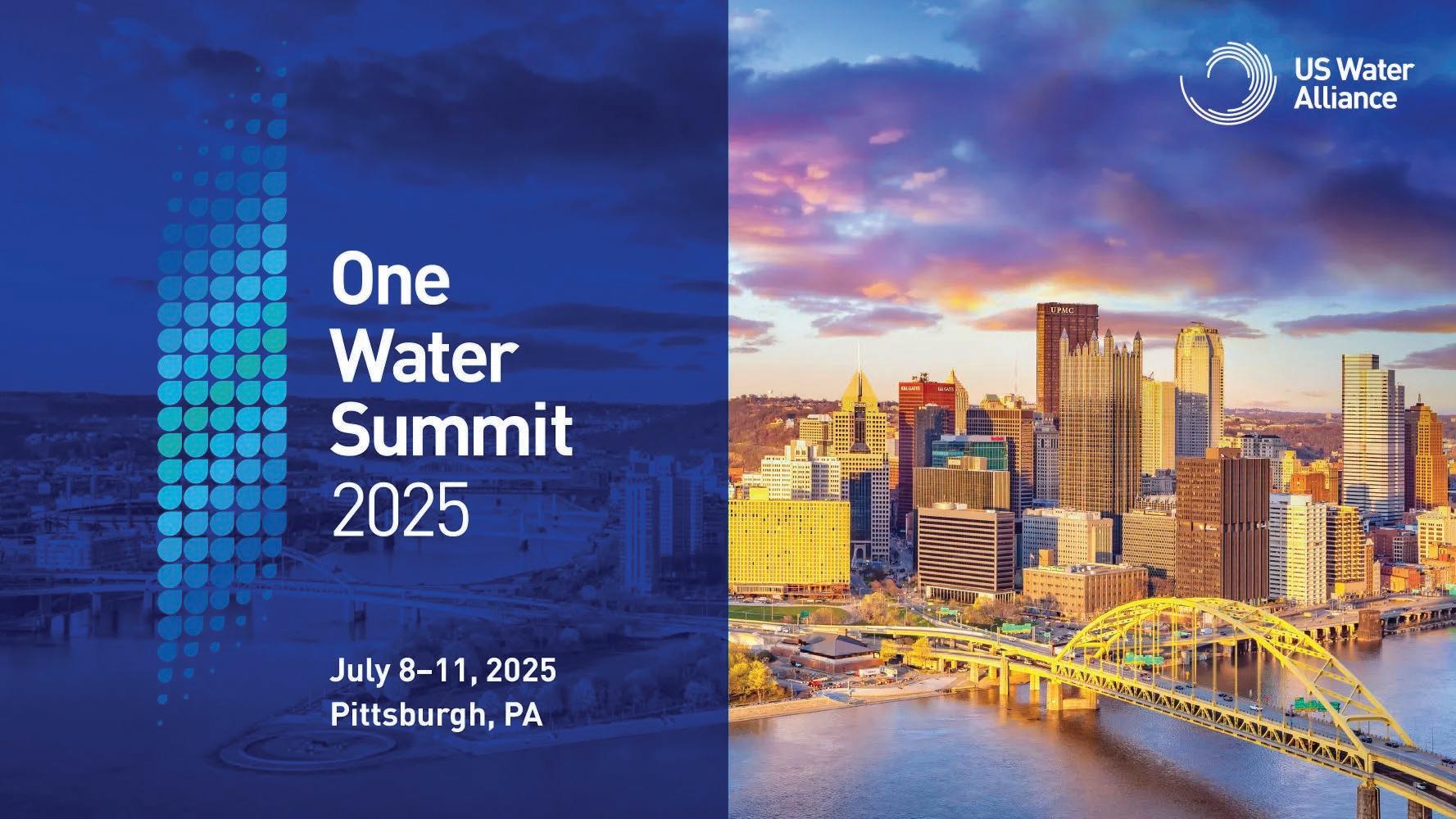
By Leah Cribari, Laboratory and Regulatory Compliance Supervisor, Eagle River Water & Sanitation District
Every spring, water professionals across the country fly to Washington, D.C., to meet with U.S. members of Congress and ask them to support critical clean water legislation. The annual Water Policy Fly-In is an opportunity to bring real-world examples of challenges water utilities face and ways to address them.
This year, RMWEA had participants from all three of our states and met with all members of Congress or their staff, except one whose office was vacant at the time. Three Young Professionals received scholarships to attend and lend their voice and perspectives – and learn the ropes for navigating long walks between congressional office buildings.



The American Water Works Association (AWWA) held its Fly-In at the same time this year, so we joined forces to create a strong voice for common drinking water and clean water issues. Key topics included:
• Infrastructure funding: The State Revolving Fund (SRF) has been underfunded, with congressionally directed spending (also known as earmarks) diverting some of the funding from the SRF to specific projects. While any support for water infrastructure is appreciated, underfunding the SRF creates challenges for utilities to update aging infrastructure, comply with new regulations, address increasingly complex water quality challenges, and improve system resilience without passing the costs onto ratepayers. The Save the SRFs pledge urges Congress to fund the SRFs at congressionally authorized levels of $3.25 billion each for federal FY25.
• PFAS: With the Environmental Protection Agency designating PFOA and PFOS as hazardous, water and wastewater utilities are vulnerable to third-party lawsuits that could hold them liable for clean-up costs under the Comprehensive Environmental Response, Compensation, and Liability Act. Two pieces of legislation, H.R. 7944 and S.1430 have been recently introduced to protect water and wastewater utilities from financial liability related to the treatment and disposal of PFAS and PFAS-latent material.
• Low-income assistance: Water affordability is a significant challenge for more than 20 million U.S. households. By creating a permanent low-income water customer assistance program, customers would have continual access
to water and wastewater services even if they can’t afford it. This program could provide important oversight of EPA’s actions to address affordability concerns. The potential outcomes of these meetings include the Senate and Congress fully funding the SRFs beyond FY25, protecting utilities from clean-up costs of PFAS, and creating a permanent low-income assistance program for water services. Legislators were receptive to hearing real-world scenarios that utilities and their ratepayers are facing.
The Fly-In also provides opportunities to hear directly from federal agencies and regulators and to connect with professionals across RMWEA and the country. Combined sewer systems are not typical in the West, but on the East Coast, there are still approximately 700 communities where combined sewer overflows are a major water pollution and public health concern. For utilities that have sections on the 303(d) List of Impaired


Streams, there is hope to get the streams off the list. The Anacostia River, for example, will be fishable and swimmable again later this summer. Almost as important as the Hill visits is the opportunity for connection between utility workers and legislators.
If you’re interested in getting more involved in water issues at the national level, please reach out to Meghan Wilson at wilsonm@bouldercolorado.gov or Leah Cribari at lcribari@erwsd.org and join the Government Affairs Committee.
You can help advocate for water infrastructure funding and sensible legislation that works to improve water quality and benefit public health by visiting www.wef.org/water-advocates. WEF’s Water Advocates Program helps you connect with elected officials on important water quality issues. The website does the work for you: simply select the topics you’re interested



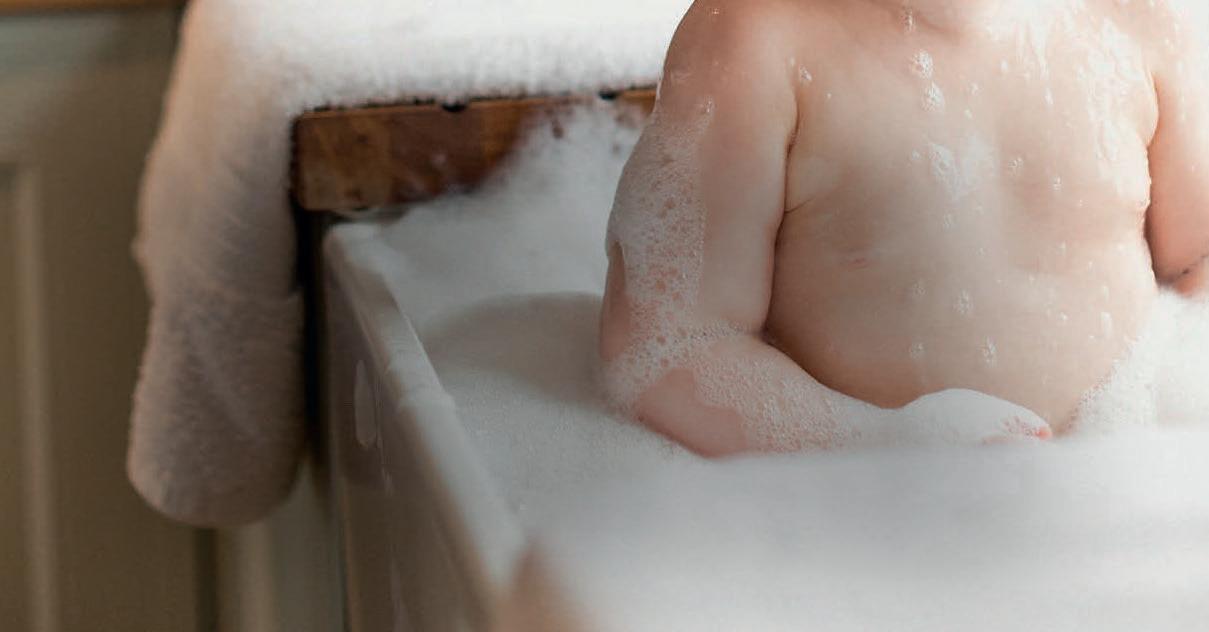
in, fill in your address, edit the form letter as you like, and hit send. (Note that some utilities and municipalities have their own rules for what constitutes lobbying and advocacy – be sure to check before entering a form on behalf of your employer)
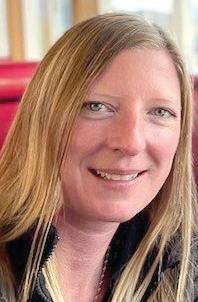
Leah Cribari is the laboratory and regulatory compliance supervisor at Eagle River Water & Sanitation District. Beyond the lab, she oversees many water quality projects including in-stream and reservoir sampling and stormwater management. She enjoys her role as an educator for staff through technical training and is passionate about connecting with others. She can be reached at lcribari@erwsd.org or 970-477-7938.














Do you have an amazing project to share but don’t have the time to write a full article for the Rocky Mountain Water Magazine? The Rocky Mountain Water Magazine Group launched a new magazine section called “Quick Connections” to connect members and their projects quickly.
RMSAWWA and RMWEA are soliciting short magazine submissions about your projects through a five-to-10-minute form. With a simple three-sentence limit, or about 280 words, we encourage utilities with limited staff time to submit short summaries about current projects.
Visit this QR code to have your project considered to be spotlighted in the magazine. You are 10 minutes away from sharing your ideas and connecting with others.





















Rocky Mountain Water is made possible by the companies below who convey their important messages on our pages. We thank them for their support of RMSAWWA and RMWEA and its publication and encourage you to contact them when making your purchasing decisions. To make it easier to contact these companies, we have included the page number of their advertisement, their phone number, and, where applicable, their website.













































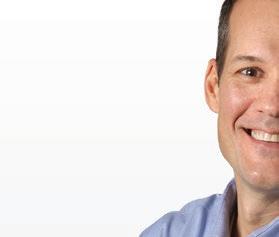



















At our very core, AE2S is all about people. Beyond engineering, we are committed to empowering our clients, employee-owners, and all those around us to develop a vision for a better tomorrow.

